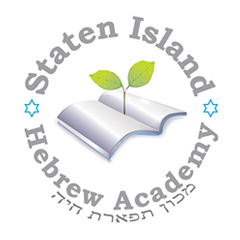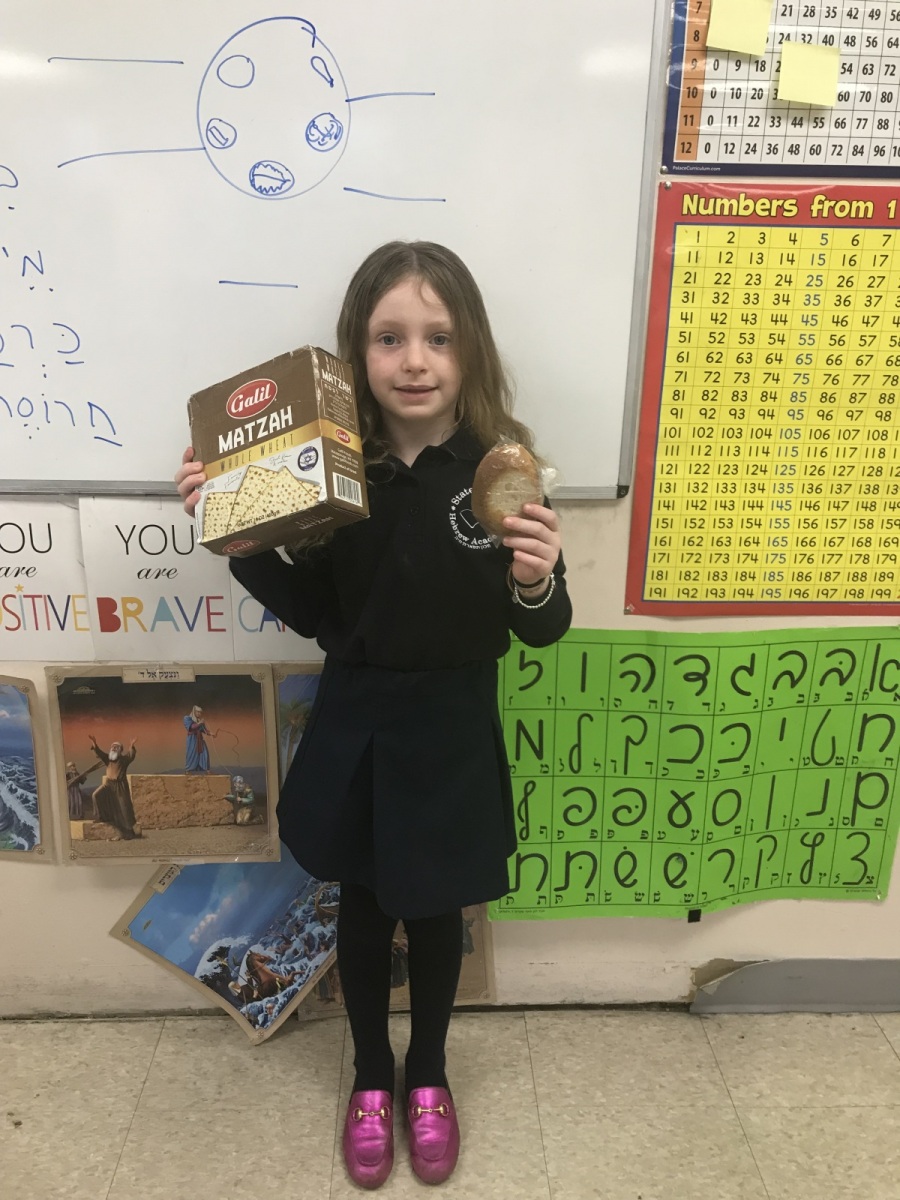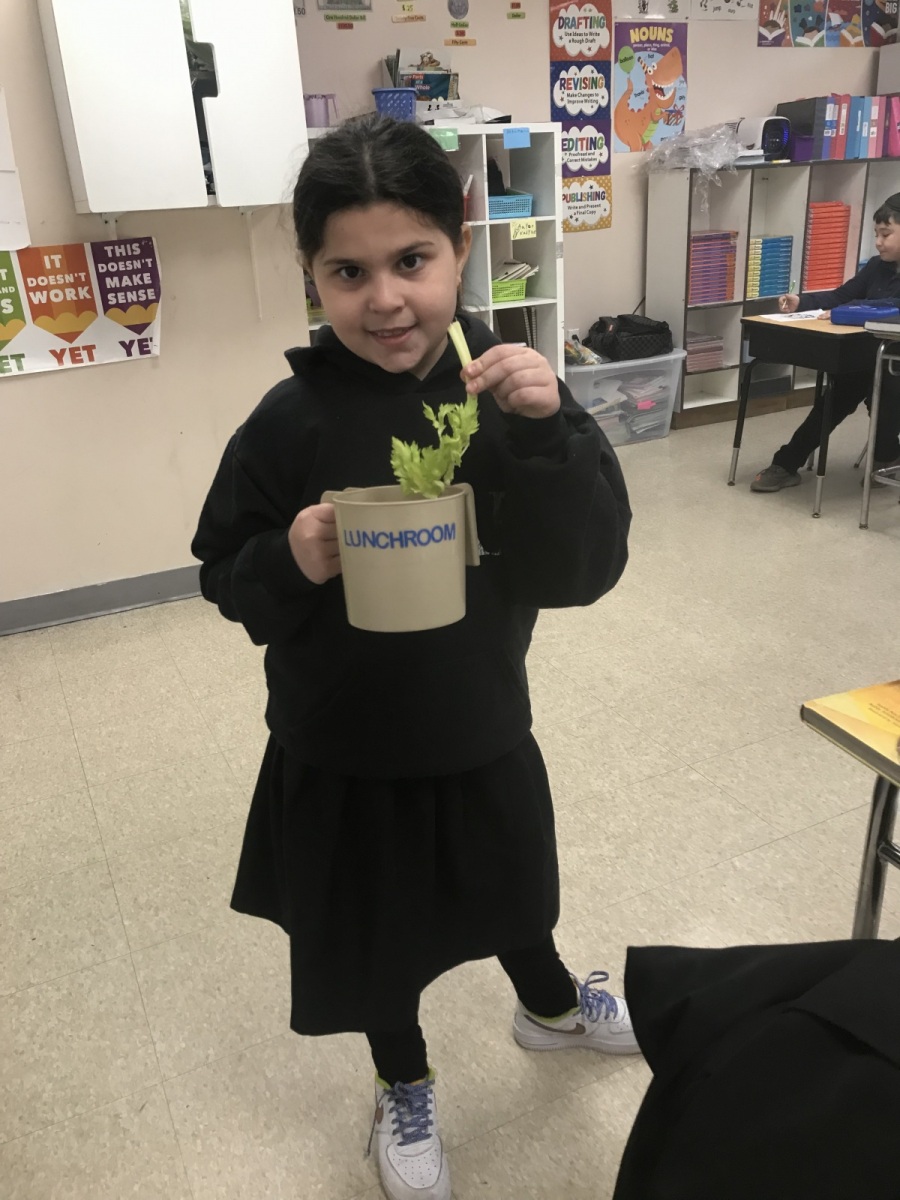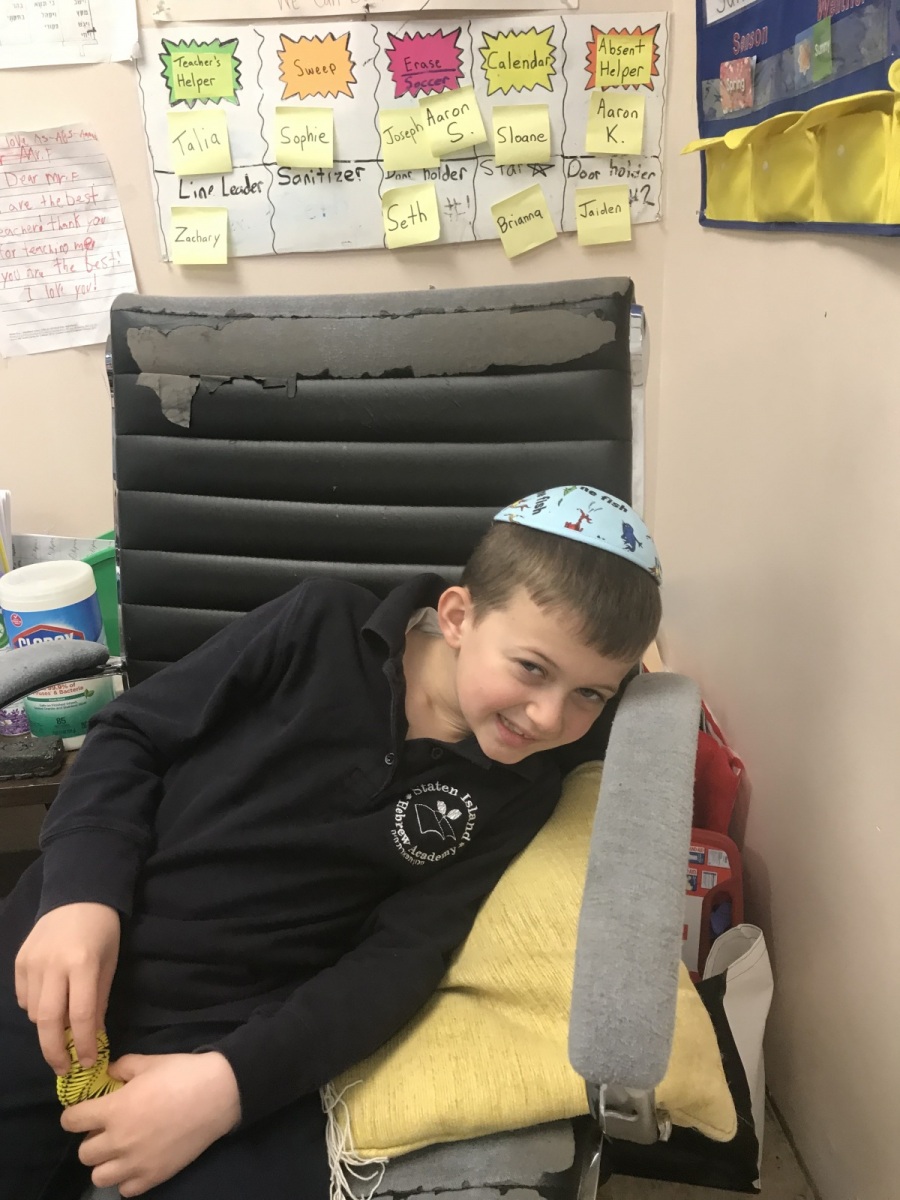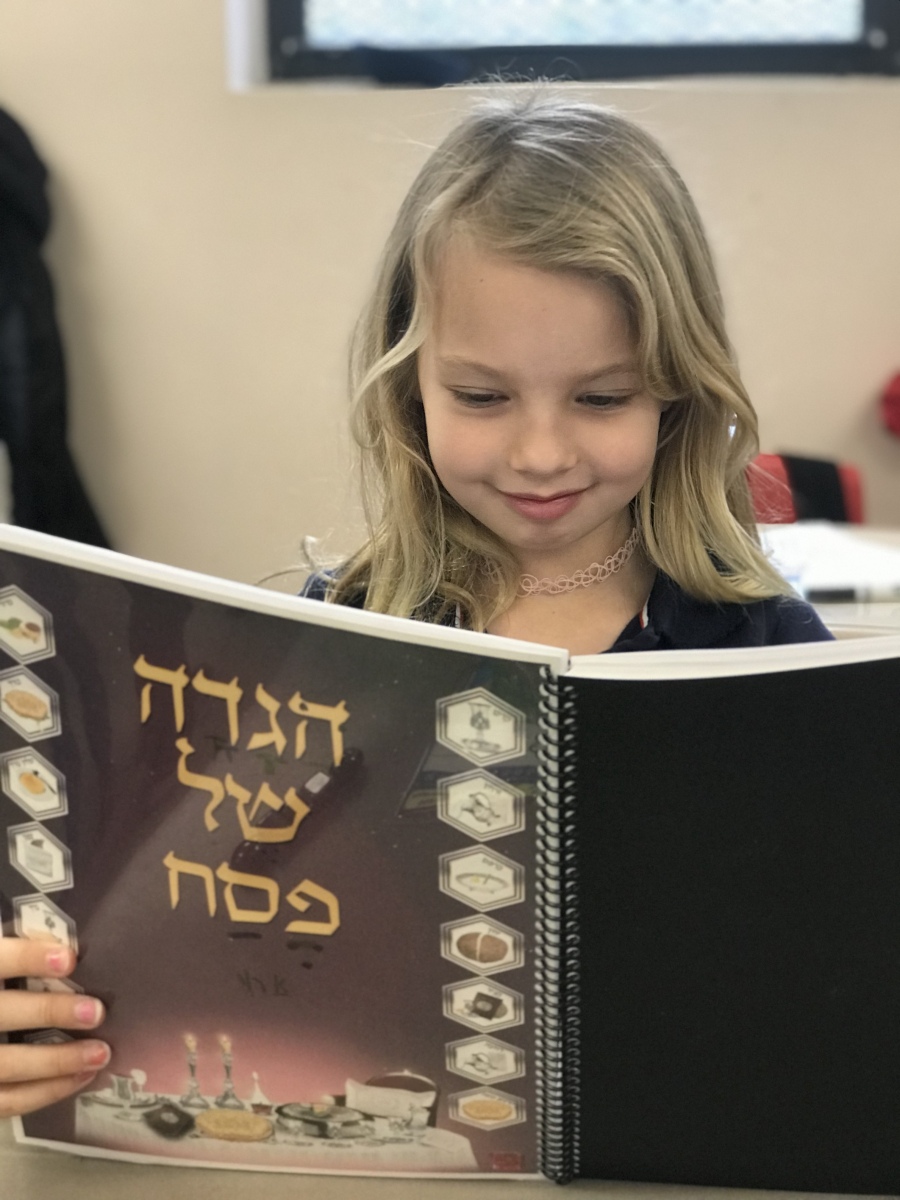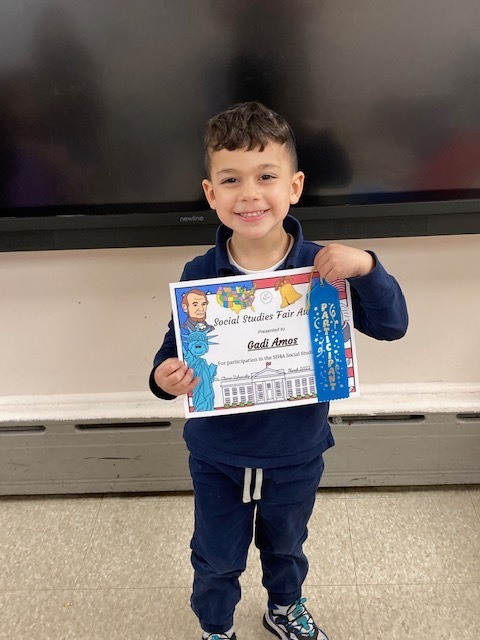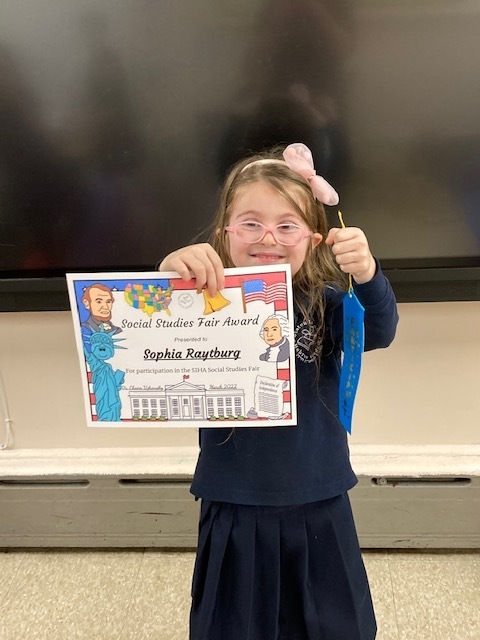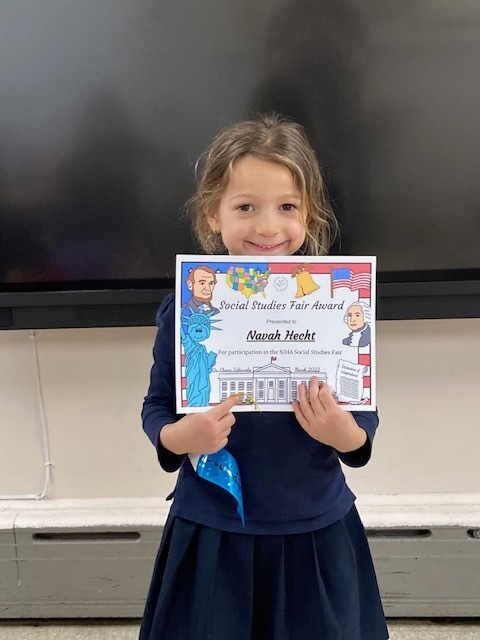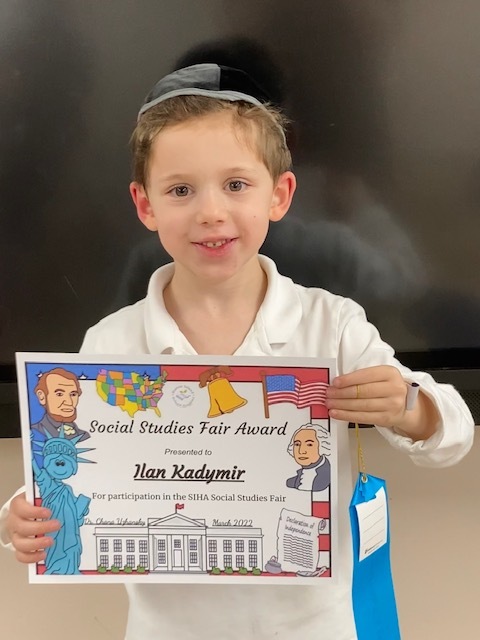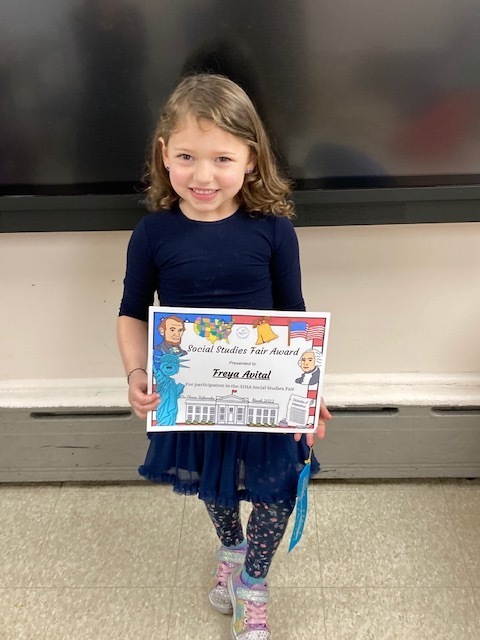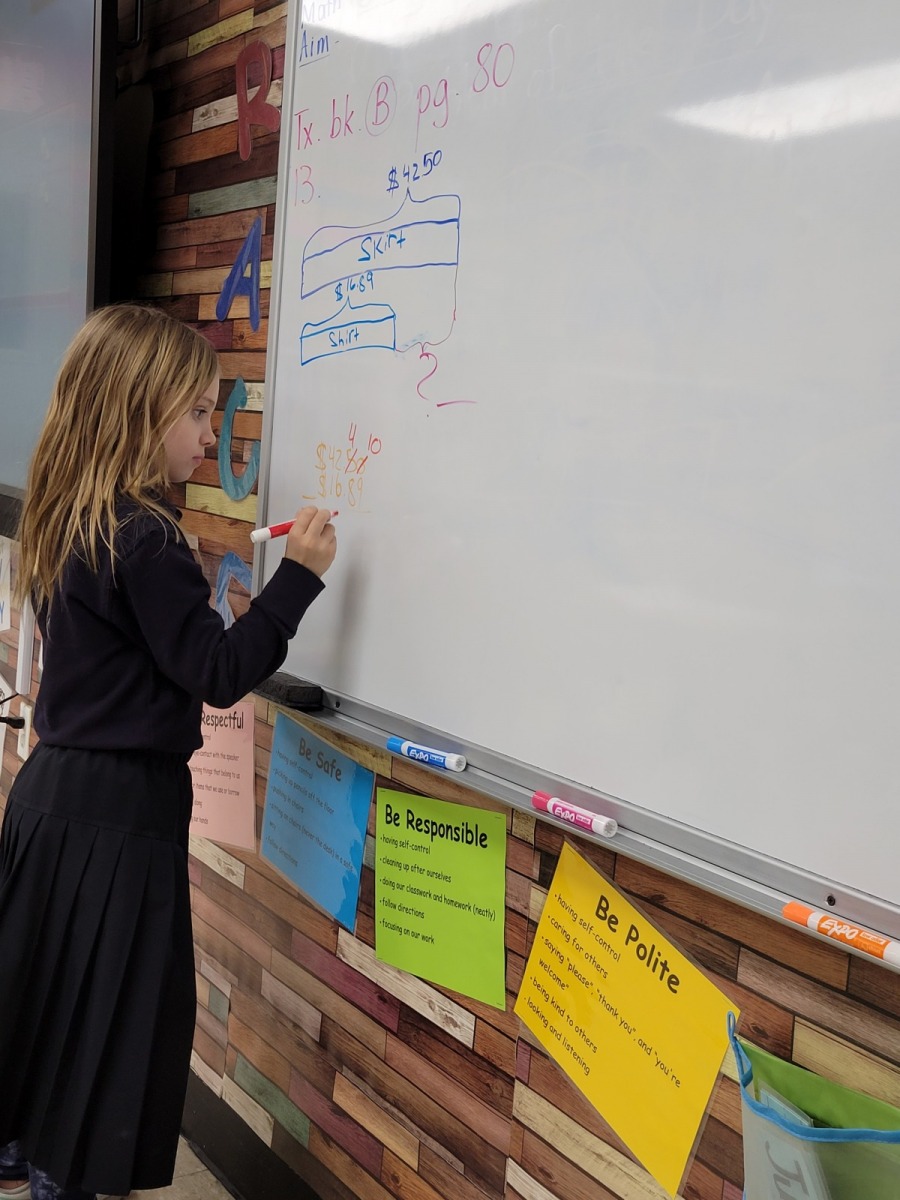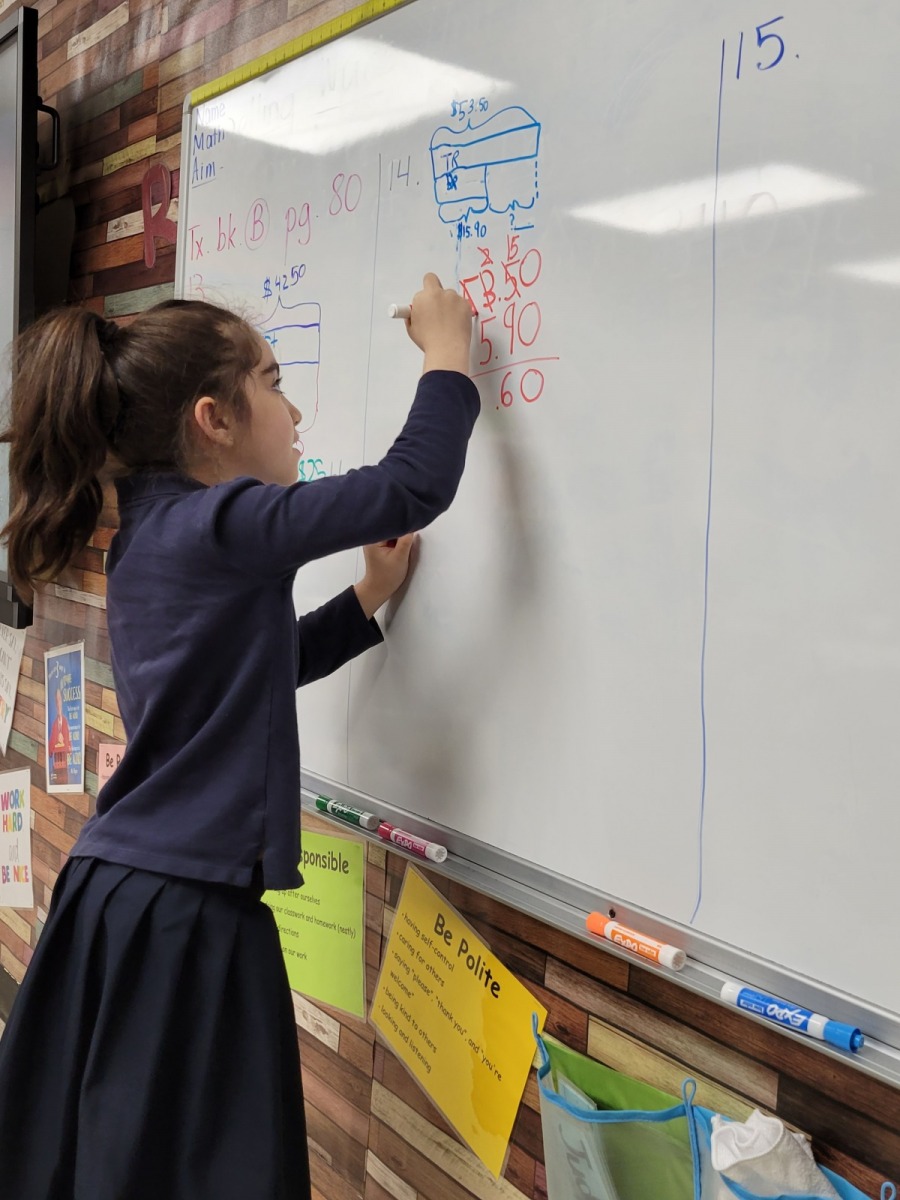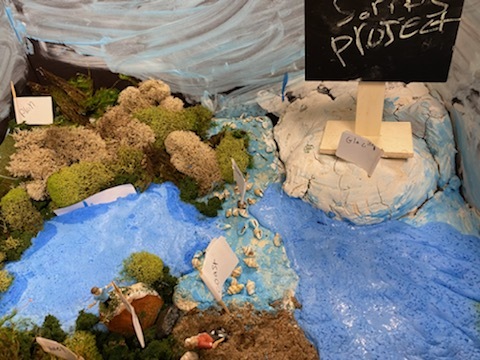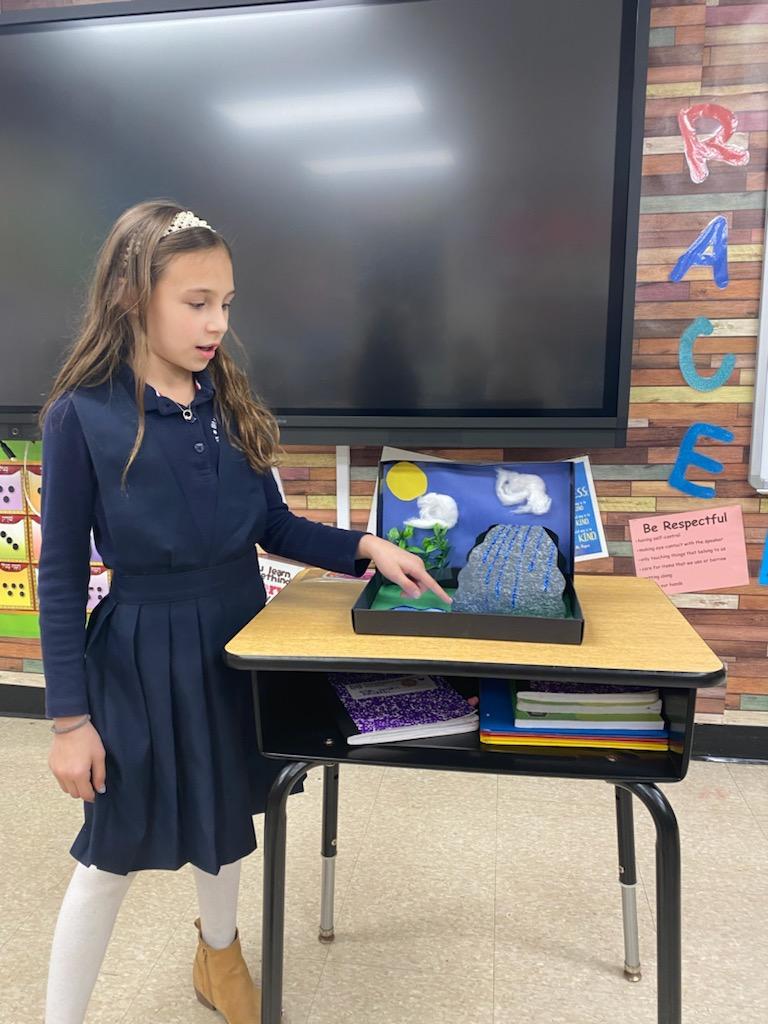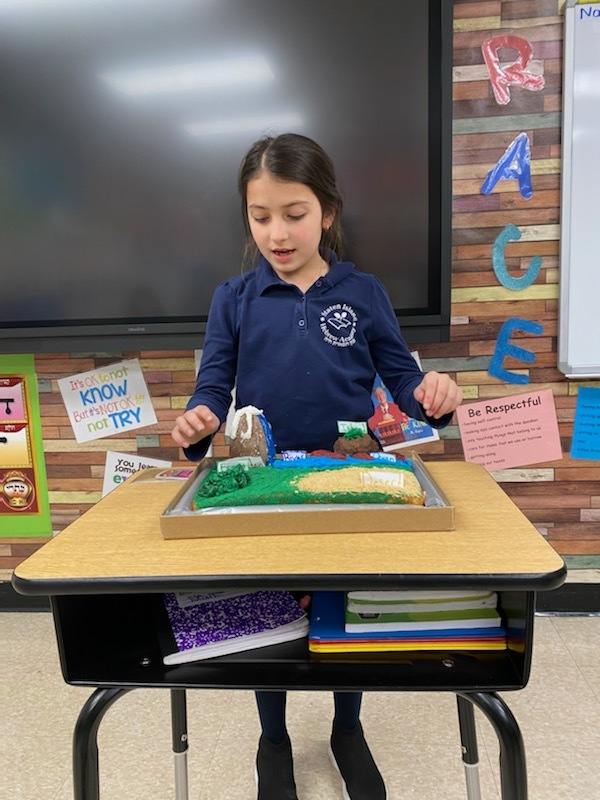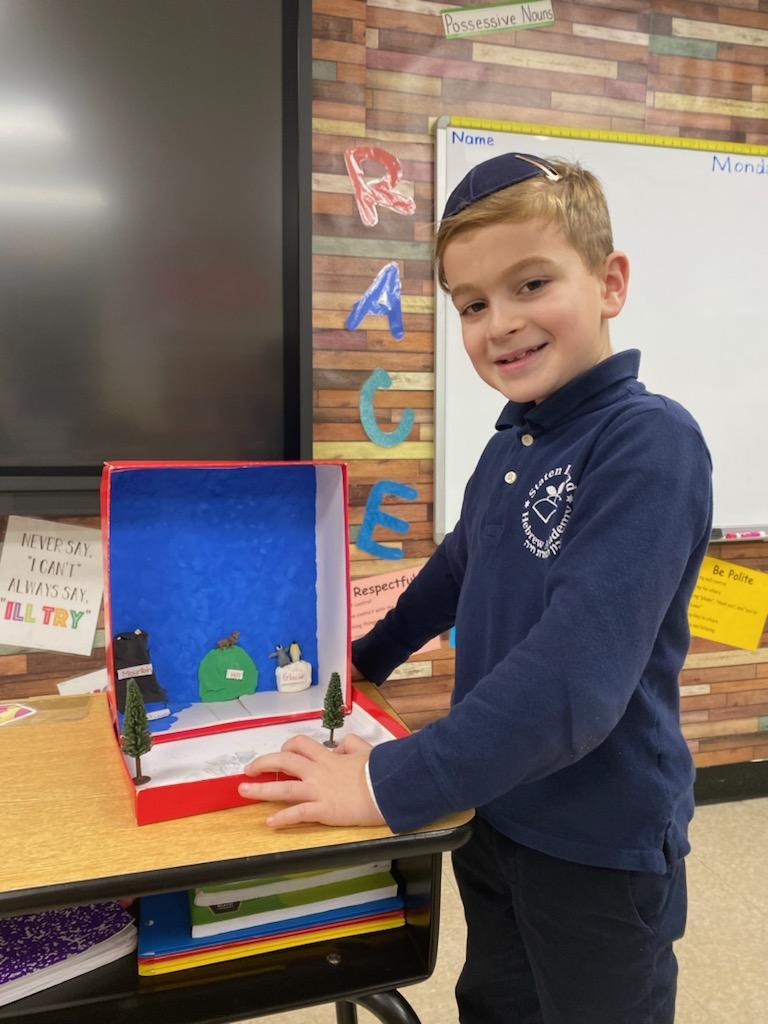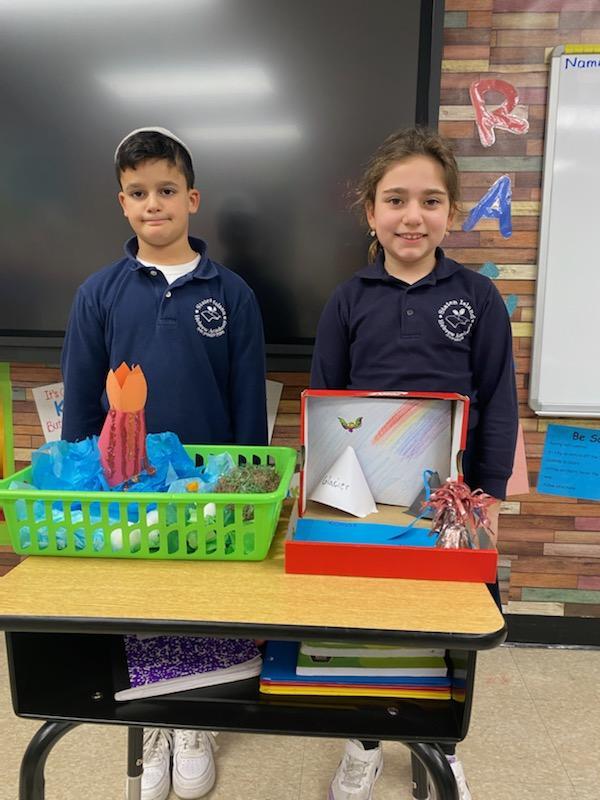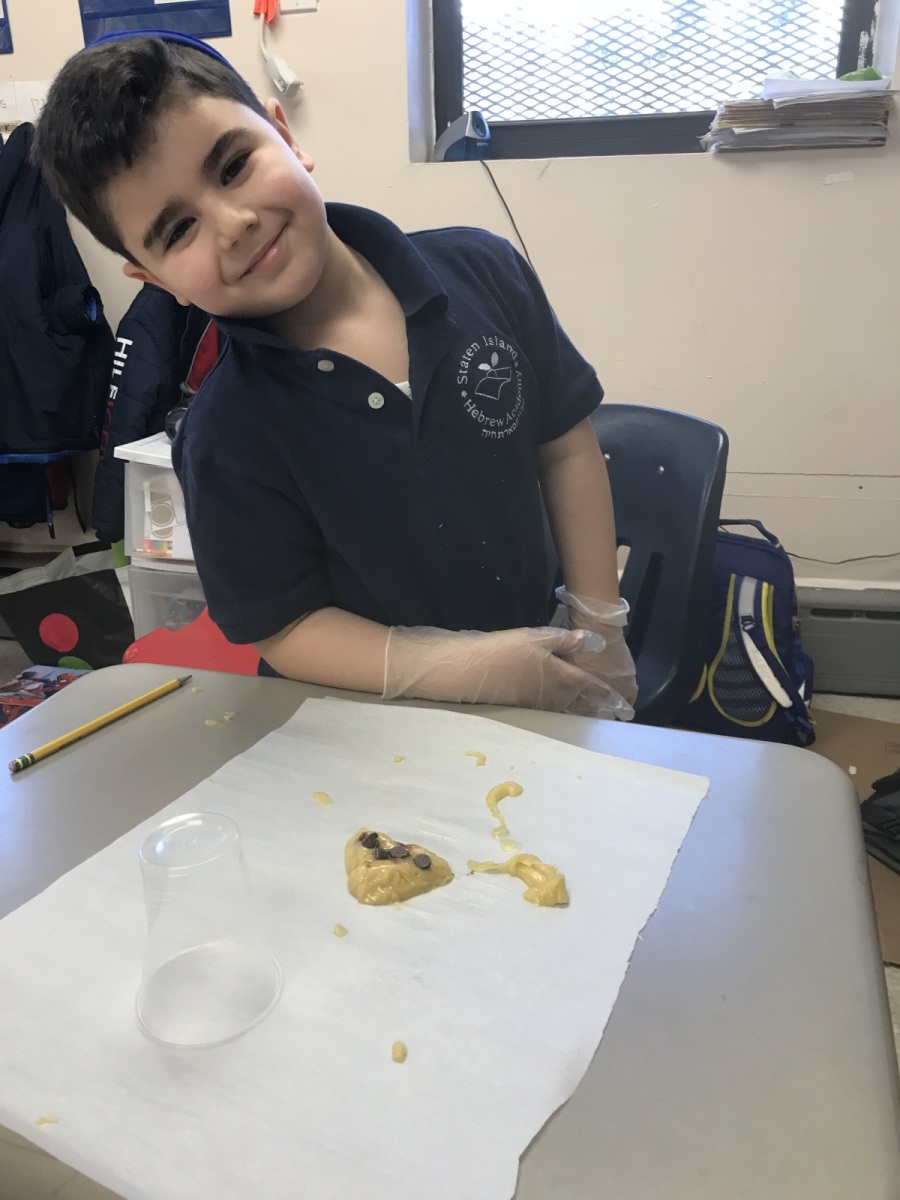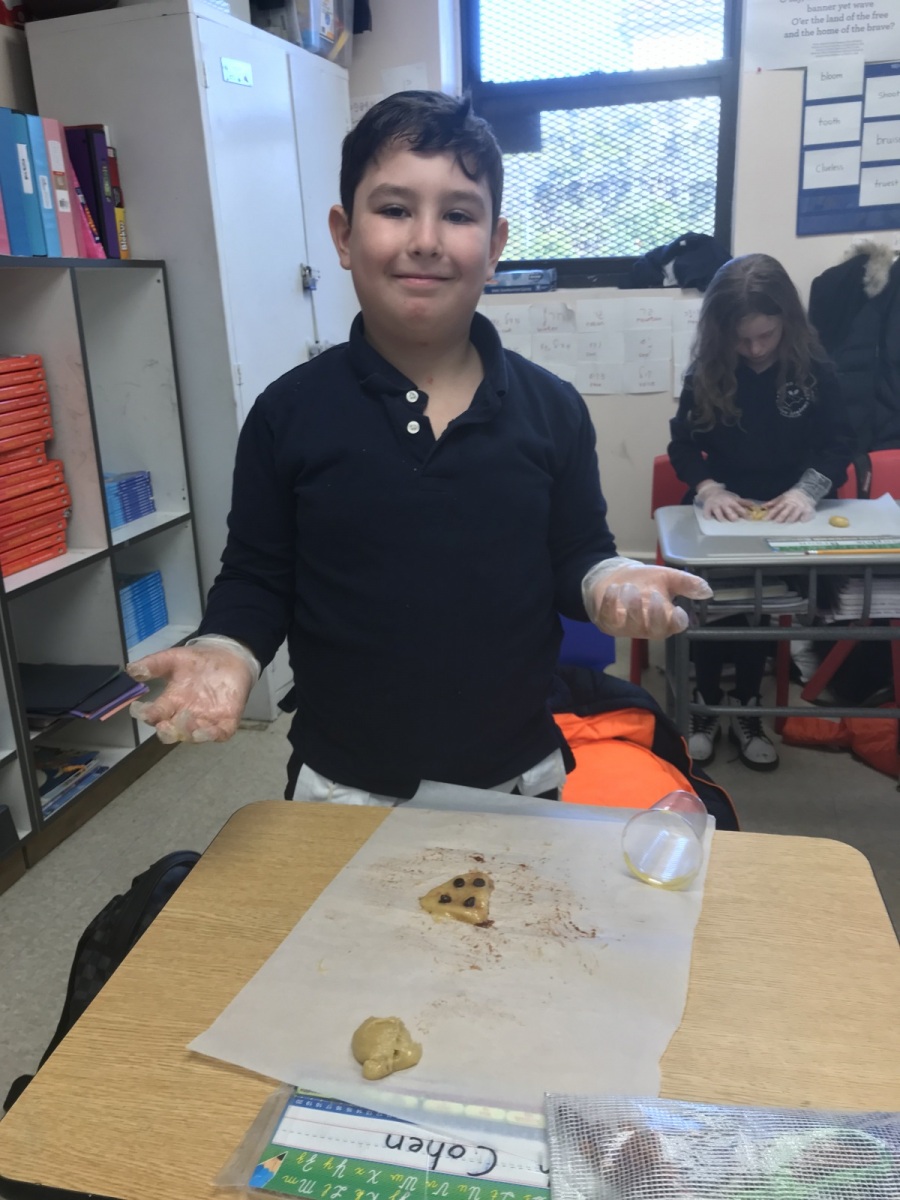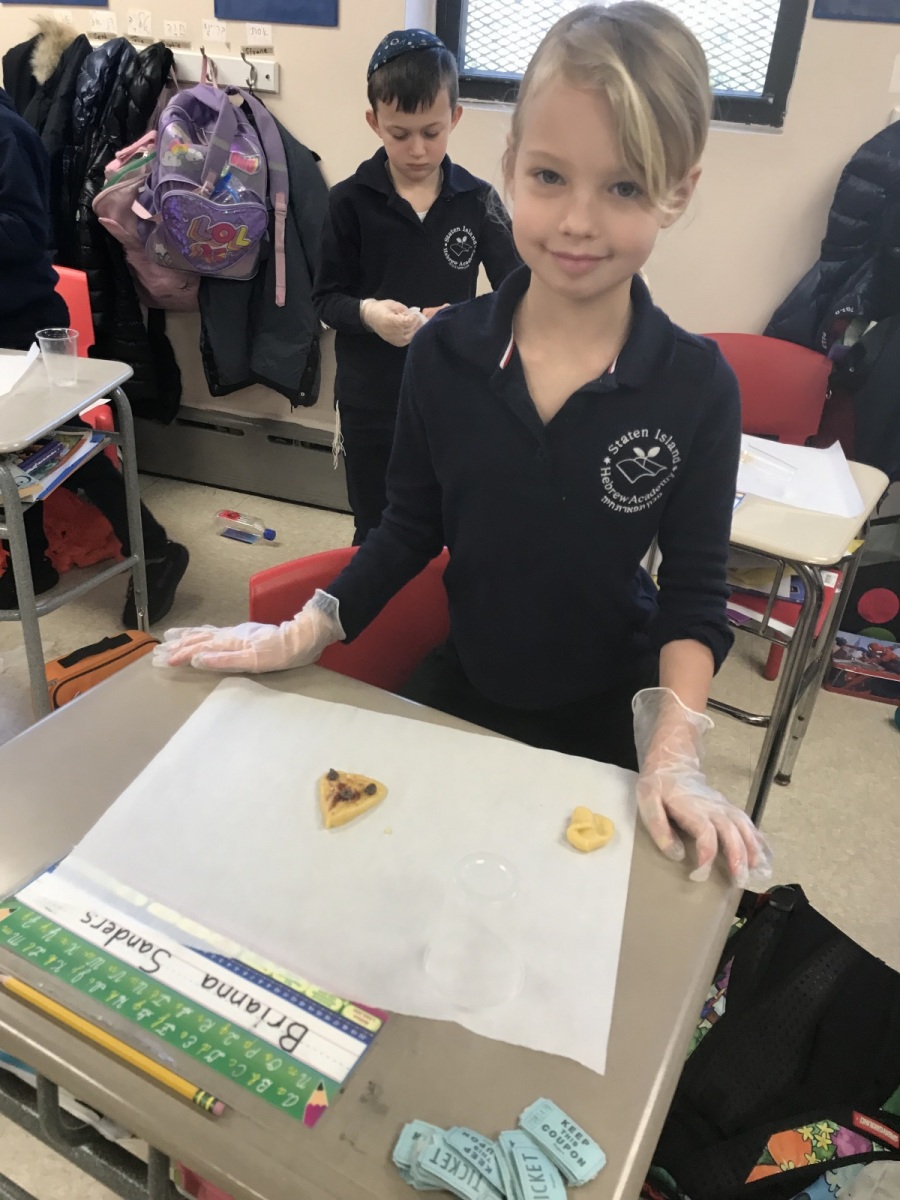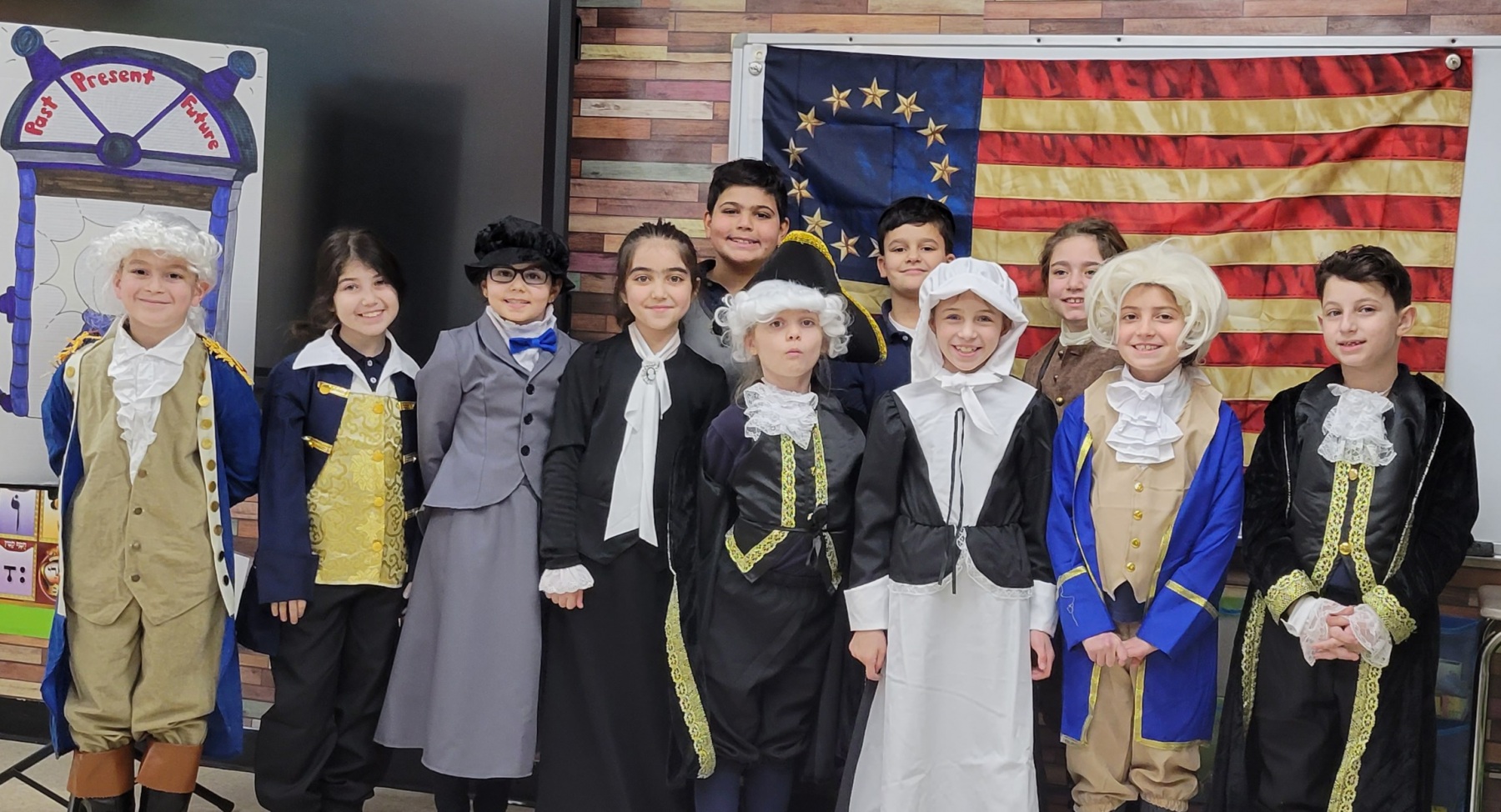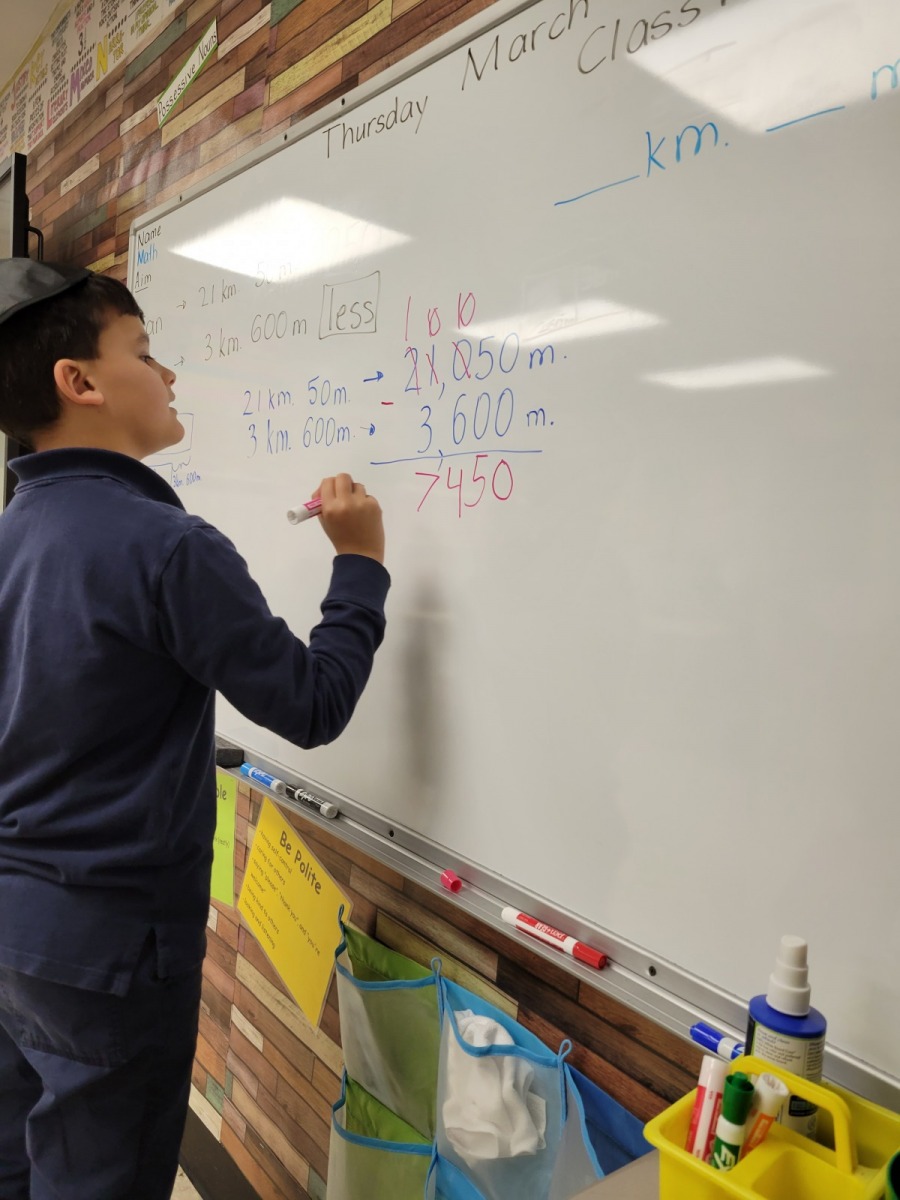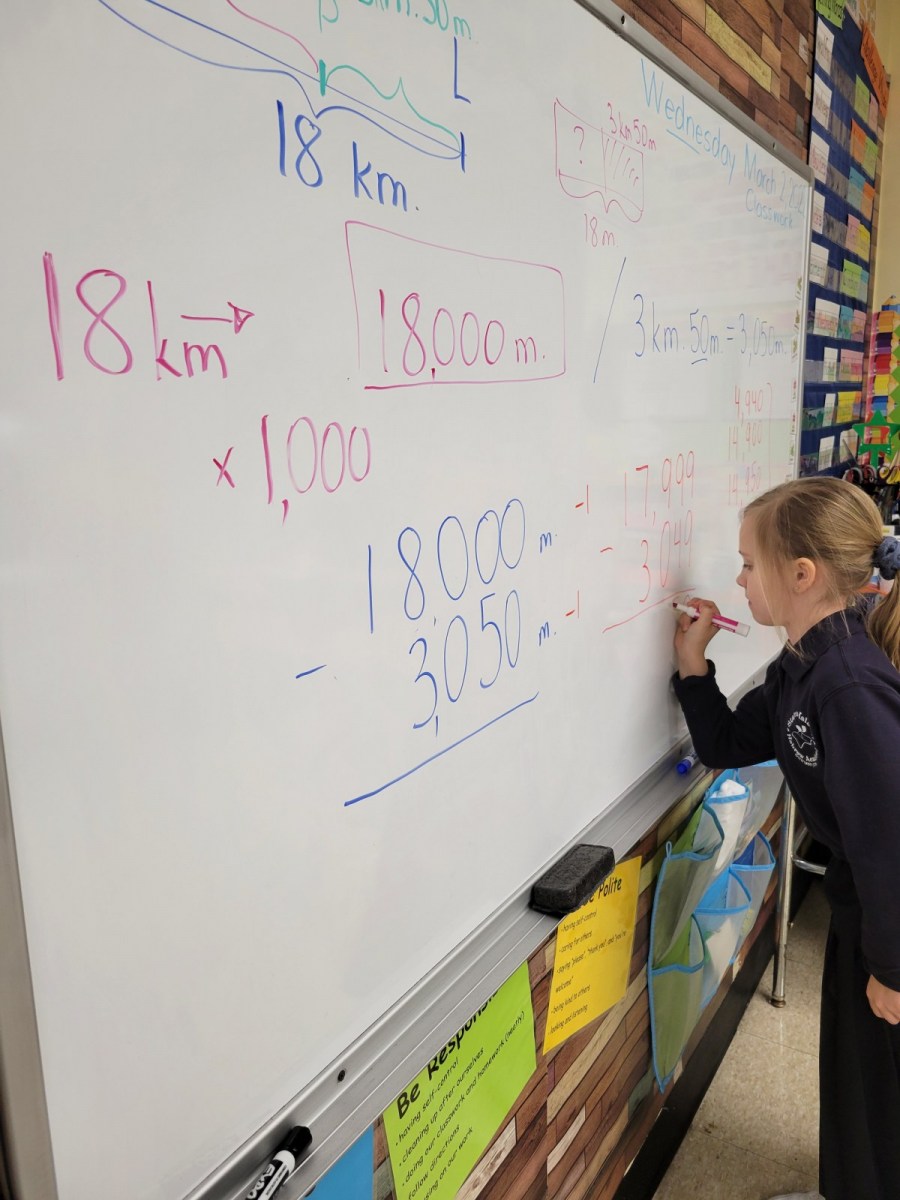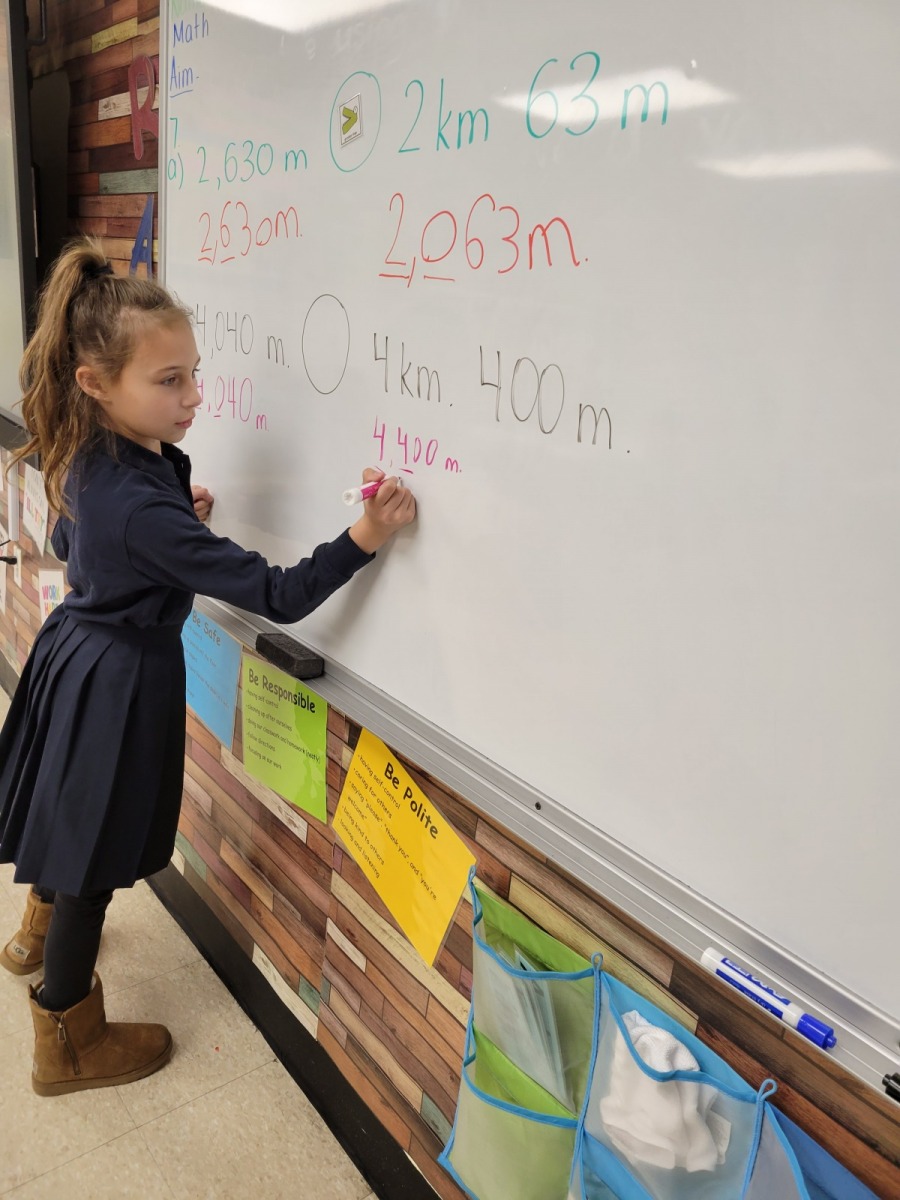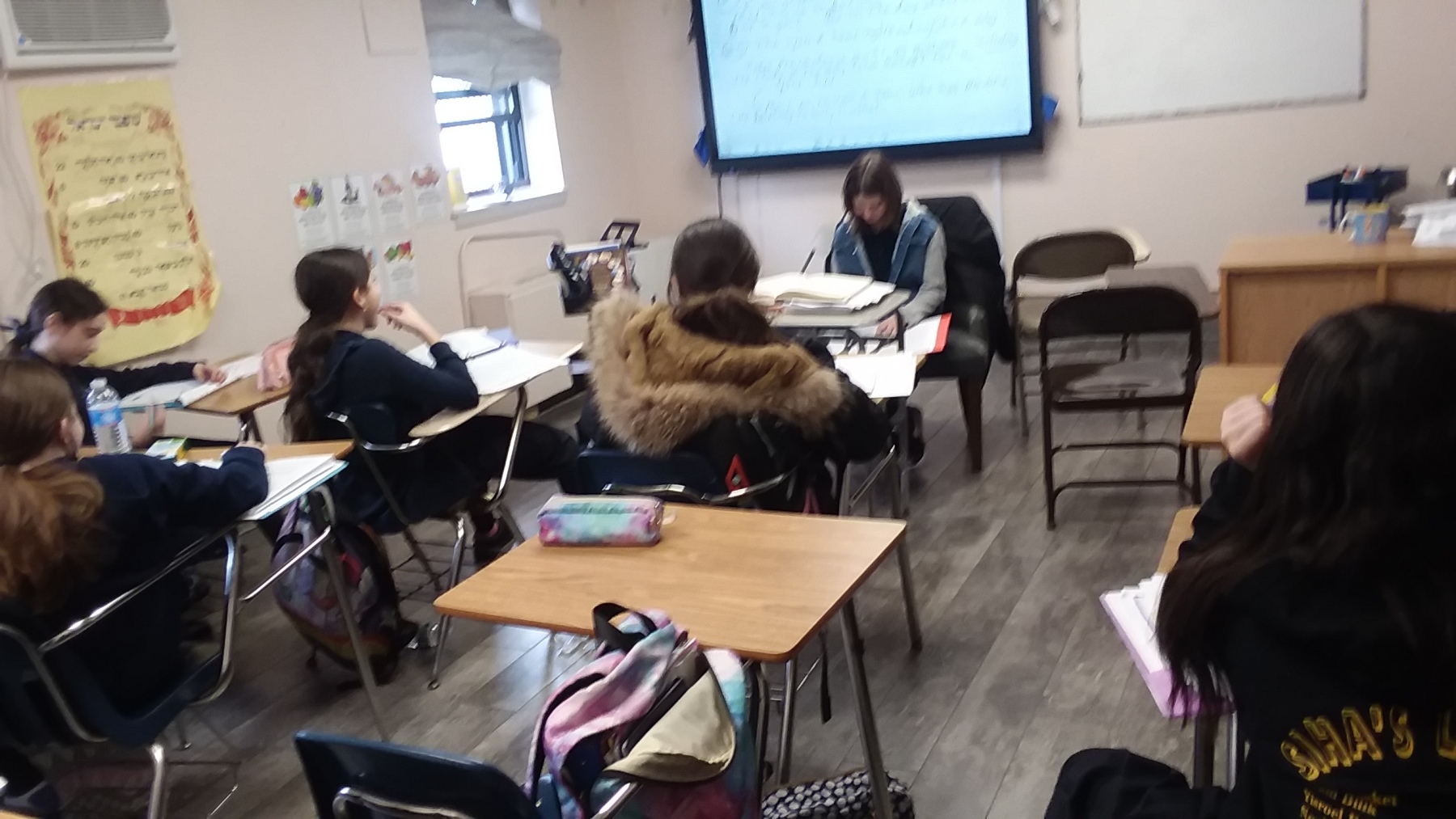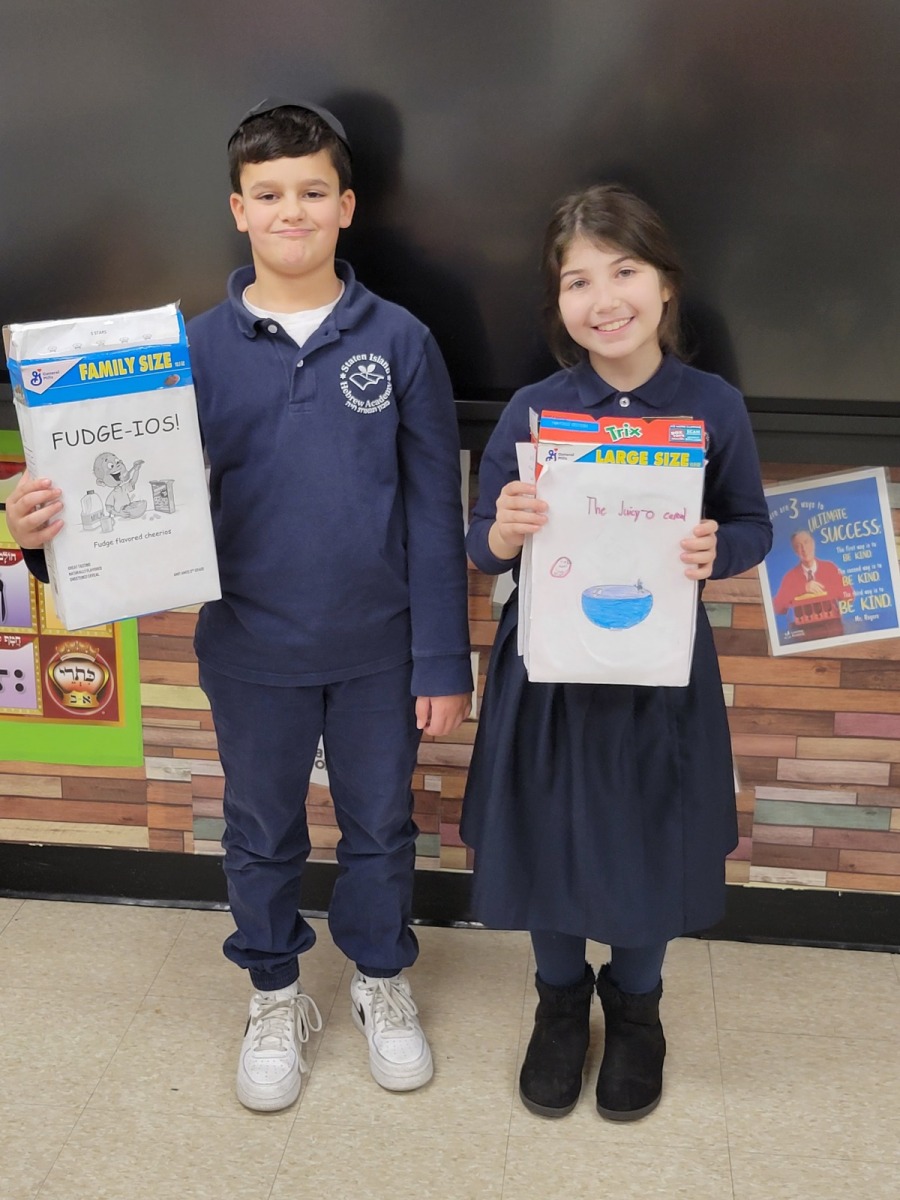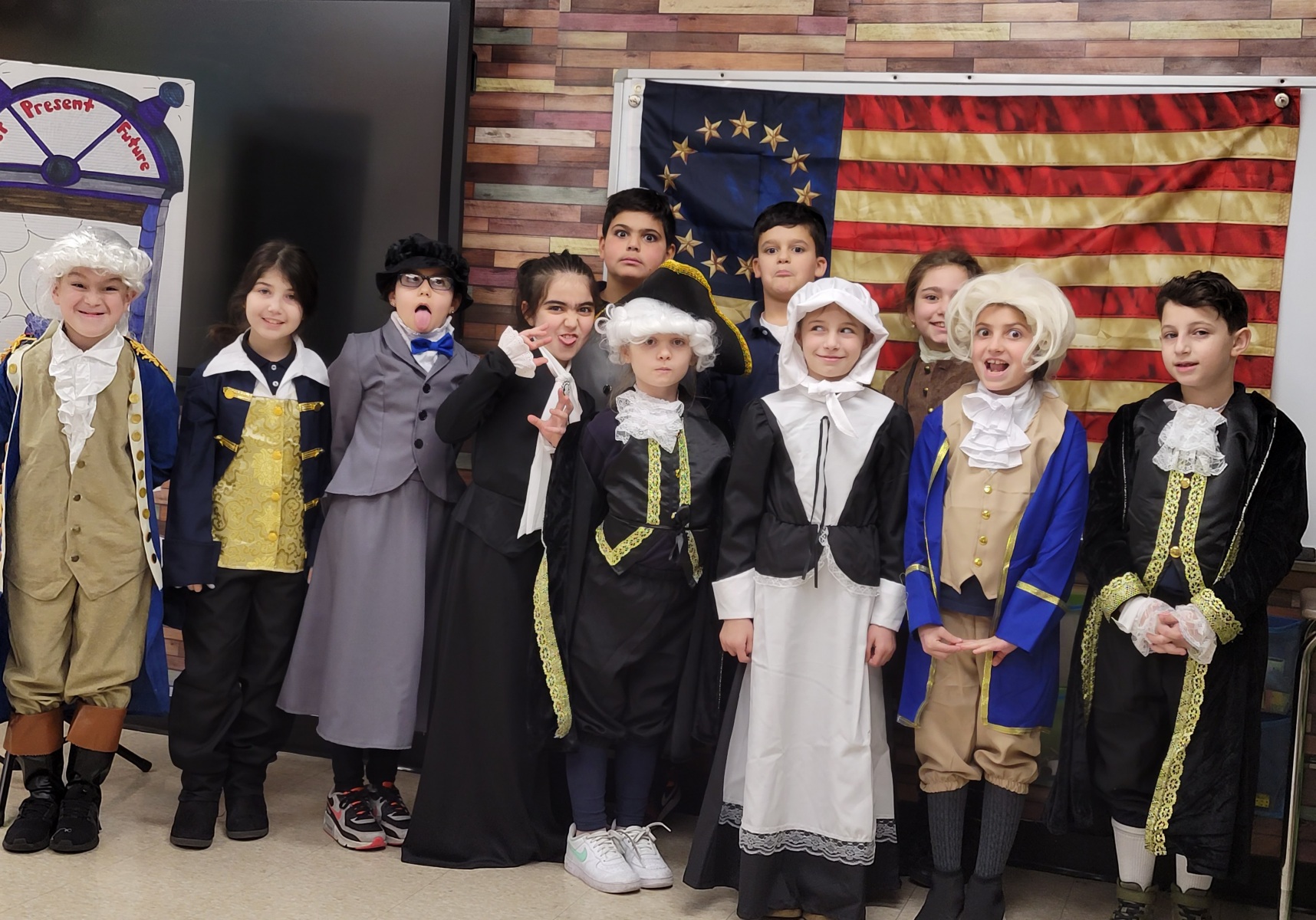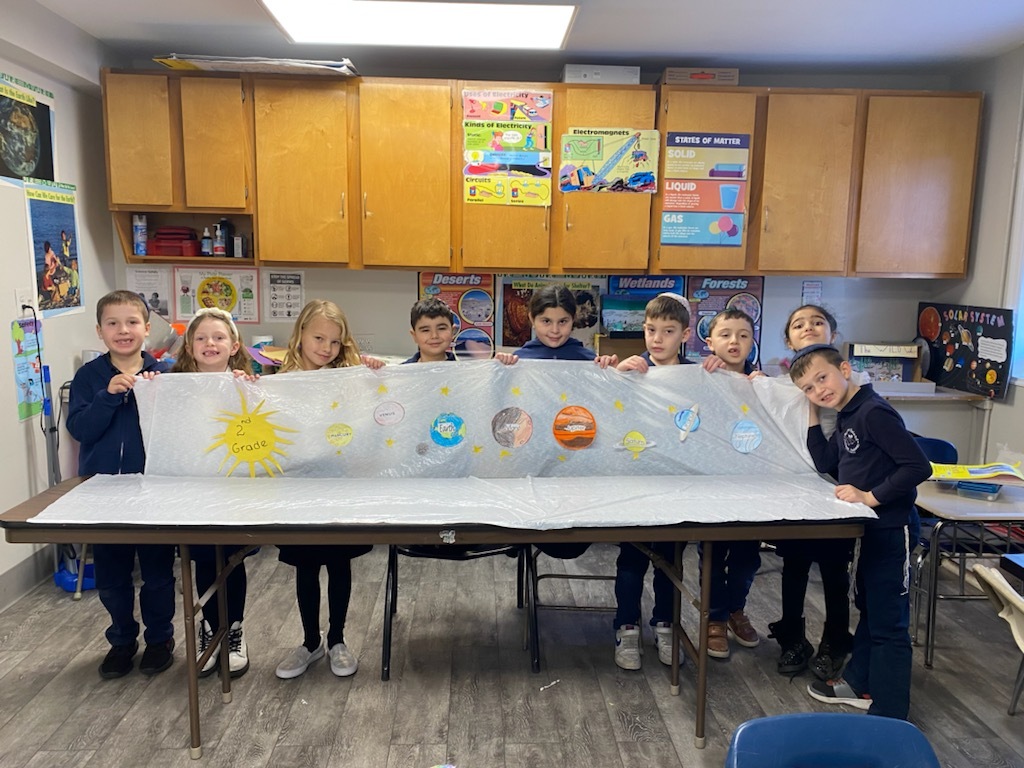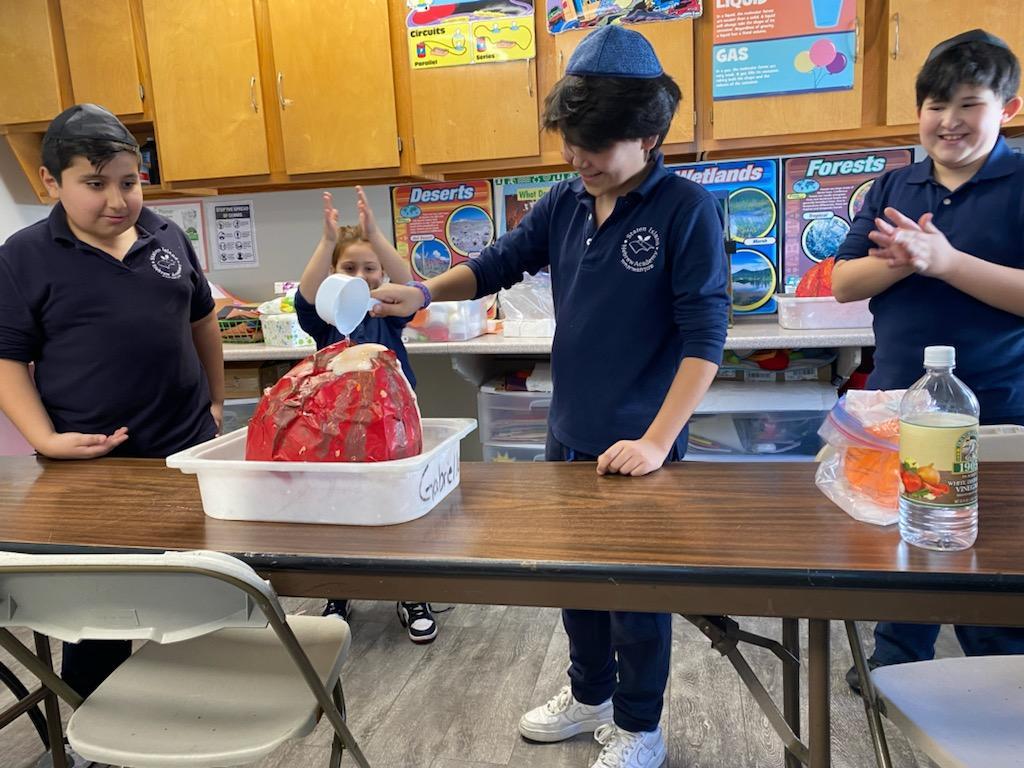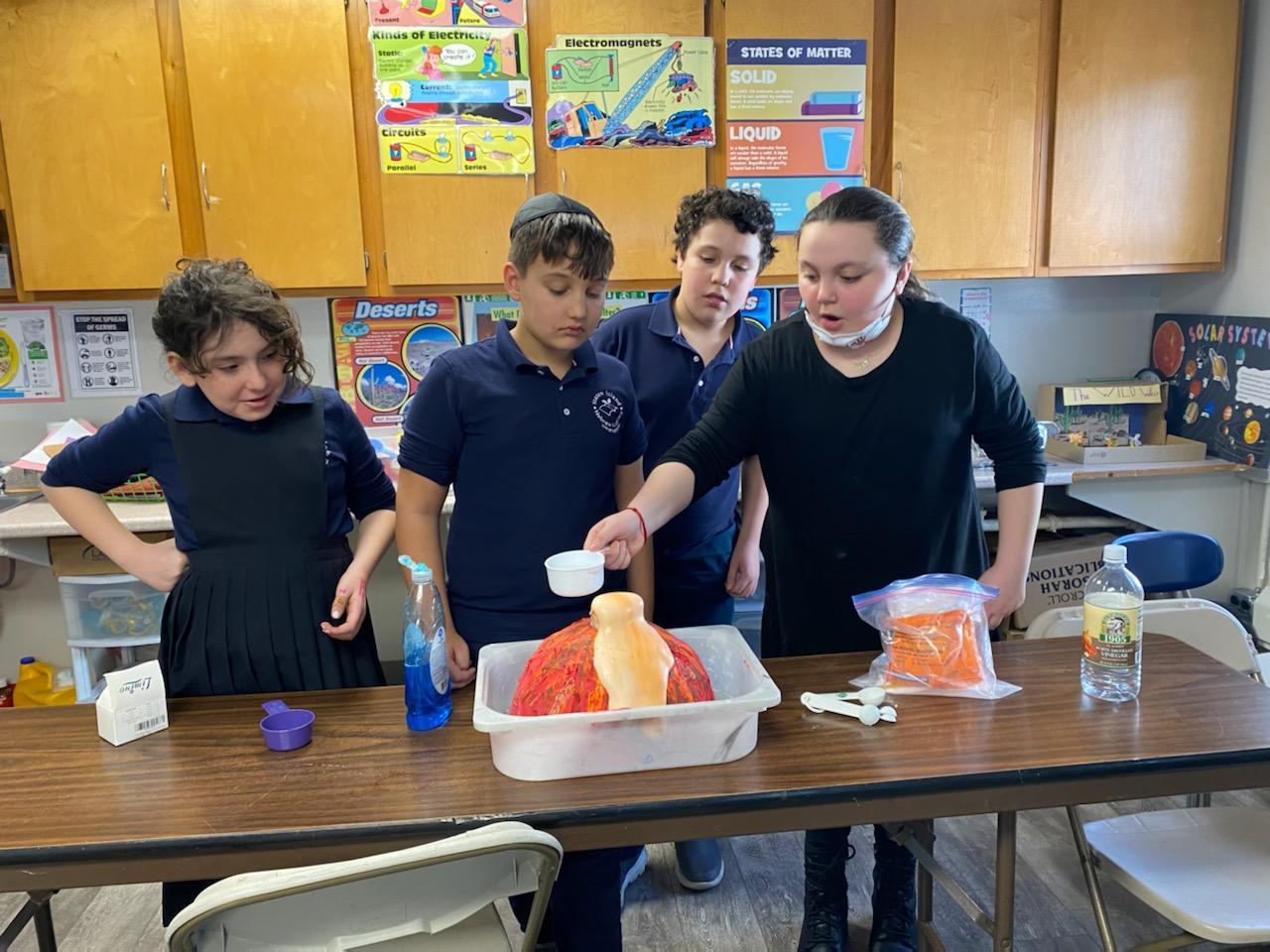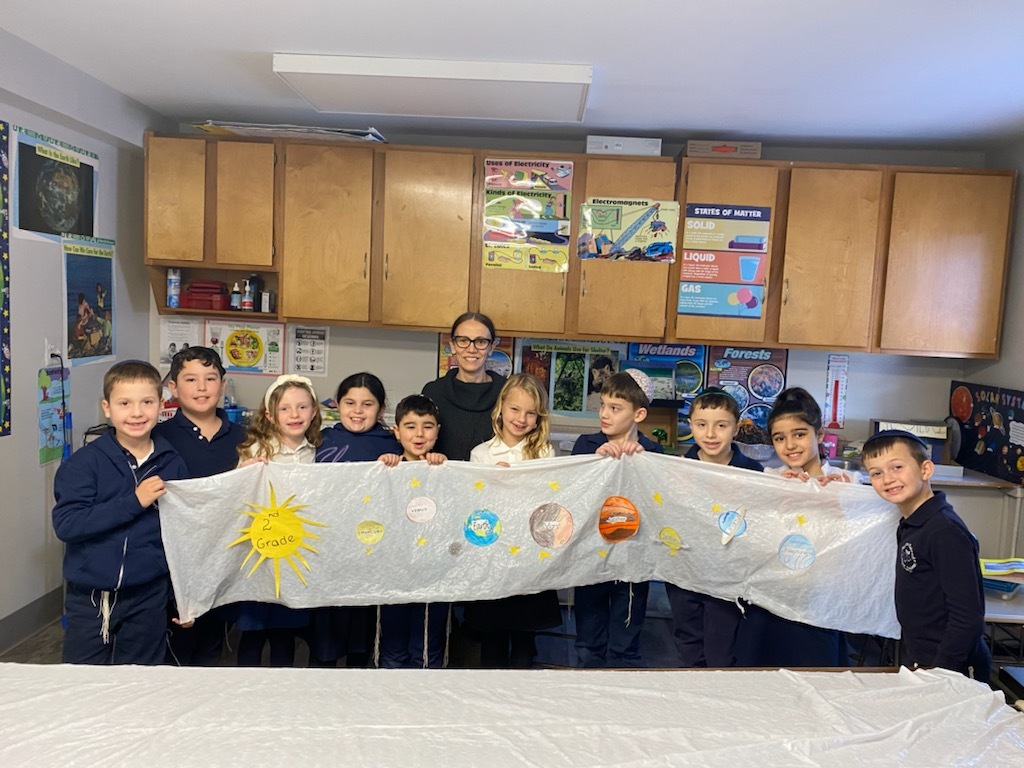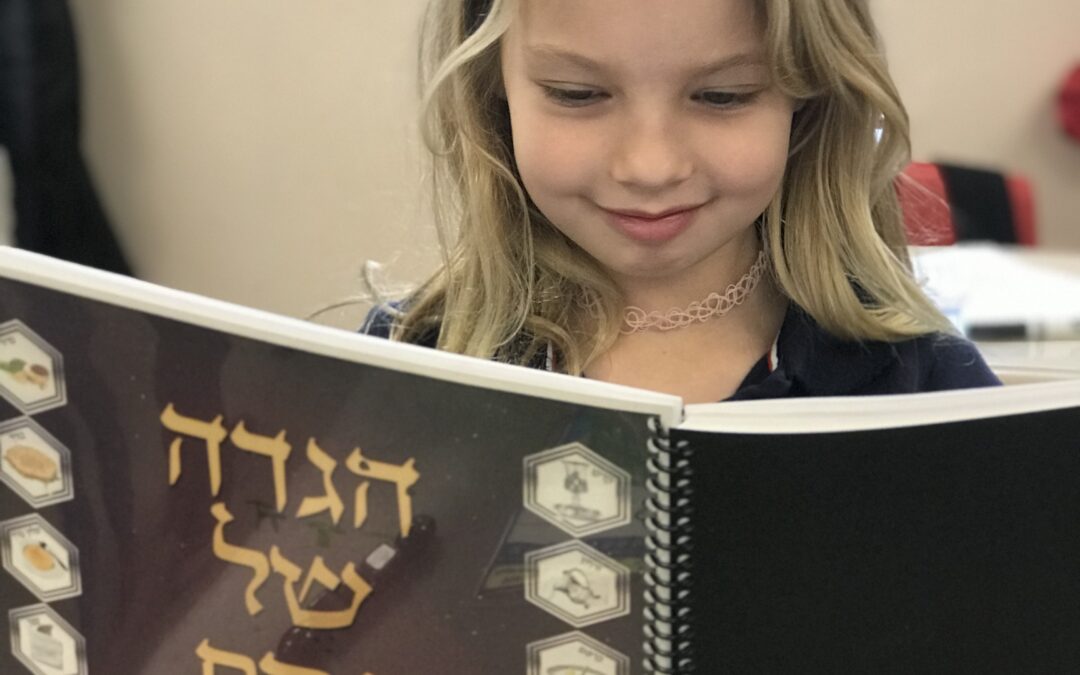
by admin | Apr 8, 2022 | Newsletter
Dvar Torah
Parsha Metzorah
Candle lighting: 7:10
Havdalah: 8:11
A good erev Shabbat SIHA Families!
Please allow me to share with you a Dvar Torah that inspired me this week and coincidentally ties to our weekly Parsha by Rabbi Dr. Mordechai Schiffman;
Embedded in the complex and esoteric laws of tzara’at (leprosy) is a simple, yet powerful message related to the power of speech. Although the verses themselves do not explicitly state what spawns tzara’at Chazal associate it with seven sins, perhaps most famously with lashon hara, derogatory speech (aka slanderous gossip).
The detrimental effects evil speech has on others is obvious. While we may have difficulty being mindful or controlling what we say, few people would deny the unethicality of hurtful speech. Yet lashon hara is not just problematic for its interpersonal effects. It is also sourced in a deficiency of character. One of the other seven sins responsible for tzara’at is that of arrogance. These two sins may be linked. Speaking ill of others may reflect an arrogant personality.
Dr. James W. Pennebaker is a leading psychologist in the field of language and personality. Using complex computer programs, he analyzes people’s word usage to mine an individual’s thoughts, feelings, motivations, and relationships with other people. Pennebaker demonstrates in several studies that the words we use not only affect others but reflect our selves.
The use of hedges in our sentences is one example of this idea. When asked “what’s the weather like outside?”, we could respond “it’s cold” or we could respond “I think it’s cold.” In his book The Secret Life of Pronouns: What Our Words Say About Us, Pennebaker argues that when we say “I think it’s cold” instead of “it’s cold,” we are implicitly acknowledging that “Although there are different views on this – and you may indeed come to a different conclusion – my own personal belief is that it might be cold outside. I could be wrong, of course, and if you have a different sense of the weather, I won’t be offended” (p. 44). “I think” implies nuance. It leaves room for multiple perspectives and different opinions. In short, it reflects humility.
When describing the laws of tzara’at as it relates to houses, the verse tells us that when a person sees something that looks like tzara’at, he approaches the Kohen and says “Something like a plague has appeared upon my house” (Vayikra 14:35). Even if the person approaching the Kohen is a scholar who knows conclusively that it is a plague, says the Midrash, he should still hedge his statement. He shouldn’t say I saw a plague. Rather, he should say, I saw something like a plague.
Rabbi Eliyahu Mizrachi (15th century, Constantinople), in his super-commentary on Rashi finds a moral message within the Midrash. The Torah is teaching us proper behavior (derech eretz): we should speak using hesitant language. He connects it to another comment of the Sages, namely, that we should train ourselves to say, “I don’t know” (Berachos 4a). Hedging our statements and admitting when we aren’t sure of something, Rabbi Shimshon Raphael Hirsch explains further, reflects a humble character.
In what is becoming an increasingly toxic social and political climate, the suggestion of the Sages rooted in the Biblical text provides us a framework for proper character and effective communication. While there may be a place for indisputable facts and speaking with conviction, if we find that everything we think and say is a definitive truth in our own eyes, it may be time to take a step back and reflect. Is it a plague or something like a plague? Am I so sure of everything or maybe I can admit that I really don’t know? If we can hedge our communication with a hint of humility, we will be well on our way to cultivating our own character and improving our relationships with others.
Chag Kosher V’Sameach,–
Chana Uzhansky Ed.D.
Head Of School
Special Announcement
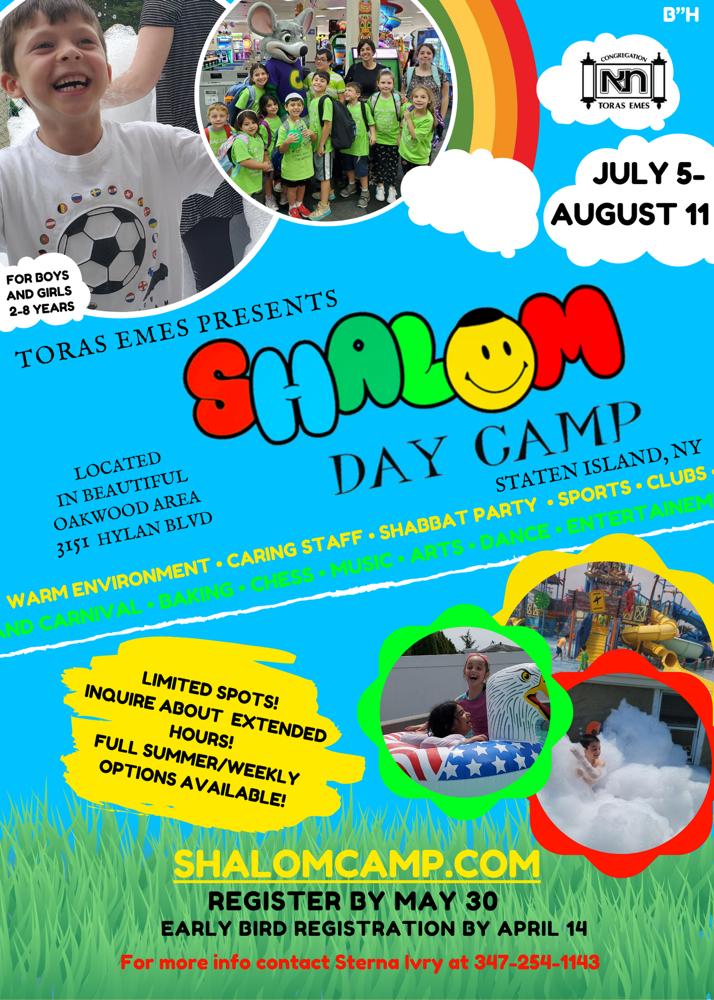
Judaics
Kindergarten and First Grade
We baruch Hashem had another great week in Kindergarten and first grade Judaics!
We were super busy learning all about Pesach! It’s coming up really fast! We are making a beautiful haggada and are learning how to say the entire ma nishtana! We are doing such a great job! We also learned how the focus of the seder is for the children to ask questions about all our practices on Pesach. I’m so proud of all the wonderful questions about Pesach that the children are asking.
In kriah, the kindergarteners are learning the letter tzaddik soffit, the last of the soffit letters. The first graders are getting much better at reading big words!
The first graders also learned how to write the letter ayin in Akiva Kesiva letters!
Great news: the boys learned how special the mitzvah of tzitzit is and how lucky they are to have this mitzvah. They each got their own pair of tzitzit to wear in school the entire day! They look great!
Have a wonderful Shabbat and a chag kasher v’sameiach!
Morah Chavi
Second Grade
The week flew by as we worked very hard on completing our Haggdahs. We can’t wait to use them at the Pesach Seder and show you how much we know about Pesach. We learned many new songs to be sung at the Seder as well as learning many older traditional songs. On Monday G-d willing we will be making our own model Seder at school. Don’t worry we still practiced our Kriya and learning many of the Shva rules. Have a Chag Kosher V’Somaich. A Healthy and Inspiring Pesach.
Third Grade
This week flew right past us in Third grade. We learned Haggadah and more about Pesach.
They can’t learn enough. We pack it in and really enjoy it.
We practice many songs to sing at the Seder.
We all look forward to next week where we will be having a Mock Seder in our classroom. We will get to practice what to do at the seder with our families.
Have a wonderful weekend and Shabbat Shalom!
Morah Ferber
5th and 6th grade boys
This week, we mastered a new Mishna!
The laws of a house that the lime, like today, tar, was removed and there were only wooden planks. We explored the Mishnah and found that Rabbi Yehuda, a TANA , a Mishnaic scholar, said that there was a Machloket – disagreement between earlier scholars, the House of Shamai and The house of Hillel., in regards to this query.
Beit Shamai holds that both shaking each board and removing one board and replacing with Kosher S’chach is required.
Beit Hillel says only one OR the other are required.
Rabbi Meir, a contemporary of Rabbi Yehuda, states that shaking each board is useless. What is required, is to remove one board and replace it with kosher S’chach.
In Parasha, we learned about the M’tzora,the man who actually contracted Tzara’as.
We learned that there is a process to him becoming pure.
He requires, karbanot, immersion in a mikveh , a ritual bath and other steps in order to attain total purification. It was so nice to hear from Elior Factor about how his family dips their new pots, pans and dishes in a mikveh prior to using them.
We are moving forward with Haggadah, and the boys are eagerly looking forward to gaining more knowledge in this area. We are also eagerly anticipating our mock seder which is to take place on Monday.
Shabbat Shalom
It was so nice to meet with the parents who attended the parent teachers conference,last night.
7th and 8th Girls
This week;
In Parasha, we learned about the M’tzora,the man who actually contracted Tzara’as.
We learned that there is a process to him becoming pure.
He requires, karbanot, immersion in a mikveh , a ritual bath and other steps in order to attain total purification. It was so ice to hear from Elior Factor [in 5th] about how his family dips their new pots, pans and dishes in a mikveh prior to using them.
We learned a lot about the laws of getting ready for Pesach. We learned that we are to search for chometz by the light of a candle [although we discussed that a flashlight is just as kosher and a LOT safer!
We learned that if we are traveling away for Pesach, we must search prior to leaving our home. We learned that we must finish eating chometz by the fourth hour of the day [in Staten Island by 10:15 a.m.] (some say as late as 10:43) We must get rid of; burn,or sell to a non Jew by 11:36 a.m. (some say as late as 11:50 a.m.). We learned a LOT more. Ask your children to fill you in…
We are moving forward with Haggadah, and the girls are eagerly looking forward to gaining more knowledge in this area. We are also eagerly anticipating our mock seder which is to take place on Monday.
Elementary School
Kindergarten
This week kindergarten learned how to read and spell TCH words. They read a nonfiction book about how animal parents help their babies. They continued learning about how to write using time order words to describe how to do an activity. In math they played different games to learn how to read, write, and identify ordinal numbers. They continued to solve word problems and how to add within 20 using mental math. In science they continued learning all about how animals can hibernate, migrate, or camouflage to help them survive in their habitat. In social studies they continued to learn about community helpers. They learned facts about the community helpers that help us get from one place to another and facts about the community helpers that keep us safe.
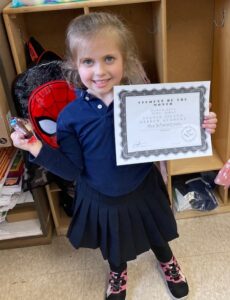
First Grade
The fabulous first graders learned alot this week. We examined cause and effect in fiction while reading the story “Click, Clack, Moo.” Students completed the Science unit about light, heat, and sound energy. They were surprised to learn that we can actually feel sound moving! In Math, we began simple multiplication facts. Students quickly mastered the concept of adding multiple groups. Finally, in Social Studies two students were acknowledged for their contributions to the Social Studies Fair-Aviel Raytburg and Aaron Elkaiev. Their explorer reports and presentation were quite stellar. We congratulate them.
Second Grade
This week 2nd grade started learning about money! We learned about the dollar and cent symbols, and how to add dollars and cents. We also began working on our compare and contrast essays, by creating a Venn diagram to use as a brainstorming tool. In social studies, we had a very interesting discussion about banks, interest, and investments! —
In science, students learned that matter goes through different changes and forms a new substance called a chemical change. 2nd graders enjoyed cutting and selecting different fruits and vegetables in a mixture.
Mr. A. Ferrera B.S.Ed
Generalist Teacher, 2nd grade
SIHA
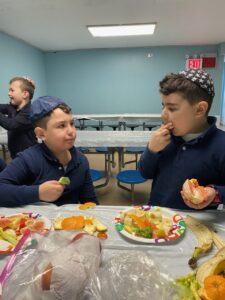
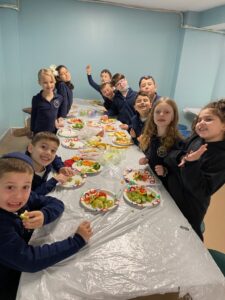
Third Grade
Third grade welcomes Ms. La Rocco, our new teacher, this week!
In science, students investigated and learned about volcanoes during a mini-lab. Students explored what’s inside volcanoes, what makes a volcano active or dormant, and the properties of rocks that are produced by volcanoes.
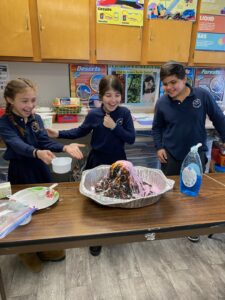
Fourth Grade
This week in math we worked on Geometry unit . Identified parallel and perpendicular lines. Measured angles and identified angles.
This week we also continued to practice for the math state test.
We are continuing to read our chapter book Number the Stars.
I’m Social Studies we read, discussed and answered questions about the people of the West.
In science students were able to define a natural resource; identify the main natural resources present in the Earth.
Fifth Grade
Greetings and salutations!
This week we continued our vocabulary and root word study. In grammar we learned about helping verbs and main verbs.
We practiced our writing in our Ready workbooks!
Lastly, we continued our novel study. I am glad to see that the 5th graders are enjoying their novels!
Congratulations on everyone for completing the Noetic Math Contest!
5th grade honors has been learning how to calculate the volume of rectangular prisms and applying the knowledge to challenging word problems.
The other 5th grade class has been reviewing essential skills with fractions, decimals, and geometry.
In science, students compared and classified matter according to its physical state. Learning about “Mixtures and Solutions” was the funniest part of the lesson. 5th graders were able to identify mixtures and solutions through different experiments. Using different methods of separation students were able to separate each substance that made up the mixture.
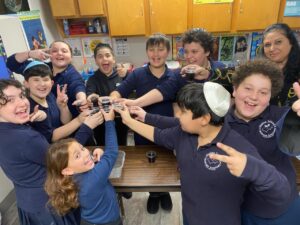
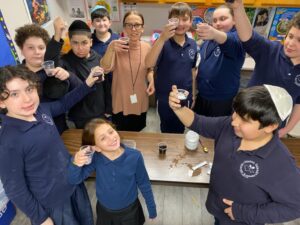
Middle School
Middle School ELA and Social Studies
6th SS and ELA
Greetings and salutations!
This week we learned about the many shenanigans of the Persian Wars. We particularly learned about the battles of Marathon and Salamis where Athenian cunning helped the Greeks defeat the Persians. We also learned about the valor of the Spartans at Thermopylae. Lastly, we learned about the decline of Persia after the Persian Wars. Onwards to the aftermath of the wars on the Greek mainland!
In ELA, we learned about perspective and practiced writing about author’s perspective. We also started our 7th grade vocabulary curriculum, and our new novel: Chasing Lincoln’s Killer.
7th ELA and SS
This week we continued our vocabulary study and practiced with irregular verbs. We also practiced our writing in our ready workbooks. Lastly, we focused on our thematic essay for Night. I am excited to begin the next novel on Monday!
In Social Studies, we finished our unit on the Constitution and are looking forward to our project next week!
8th ELA and SS
8th graders had a good week! In ELA, we are wrapping up our unit on Fahrenheit 451. In Social Studies, students started their Holocaust Research Paper in preparation for the Holocaust Remembrance Day.
Middle School Math
Congratulations on everyone for completing the Noetic Math Contest!
6th grade is finishing up their unit on algebraic expressions.
7th grade has finished their unit on functions and is preparing for the state test.
8th grade honors has been learning about quadratic equations and how to solve them with various methods.
The other 8th grade class learned how the volume of a cylinder relates to the volume of a sphere and a cone.
Middle School Science
6th grade Science
Students were able to describe the motion that provides the Earth with its day and night cycle;recognize the motion of the Earth that provides it with its seasons; understand the Earth orbits around the Sun and explain its year long cycle; Students explored how Earth’s rotation causes day and night. They also learn the scientific definition of revolution.
7th Grade Science
Students are investigating how our body systems work together to maintain homeostasis. They are currently taking a journey through the digestive system and discovering how nutrition and circulation play an important role in supplying our body with the nutrients it provides and how it actually gets through our bodies.
8th Grade Science
Students are preparing for the Living Environment Regent by taking practice exams and working through various aspects of this regent. In addition, students are investigating how energy flows through ecosystems, how biotic and abiotic factors affect those ecosystems and the importance of interdependence within each system.
Jewish History
7th Grade is learning about the greatest transition in history. The Jewish people went from being slaves to a nation that was ready to receive the Torah in only 49 days! During those 49 days, Hashem clearly demonstrated to the Jewish people His existence, power, and control. Hashem also showed how much He cares about and loves the Jewish people.
8th grade finished the unit about the Second Bais HaMikdash, its destruction, and the aftermath of the destruction. We have clearly seen many examples of the importance of listening to the Torah Sages, following the Torah, and staying united.
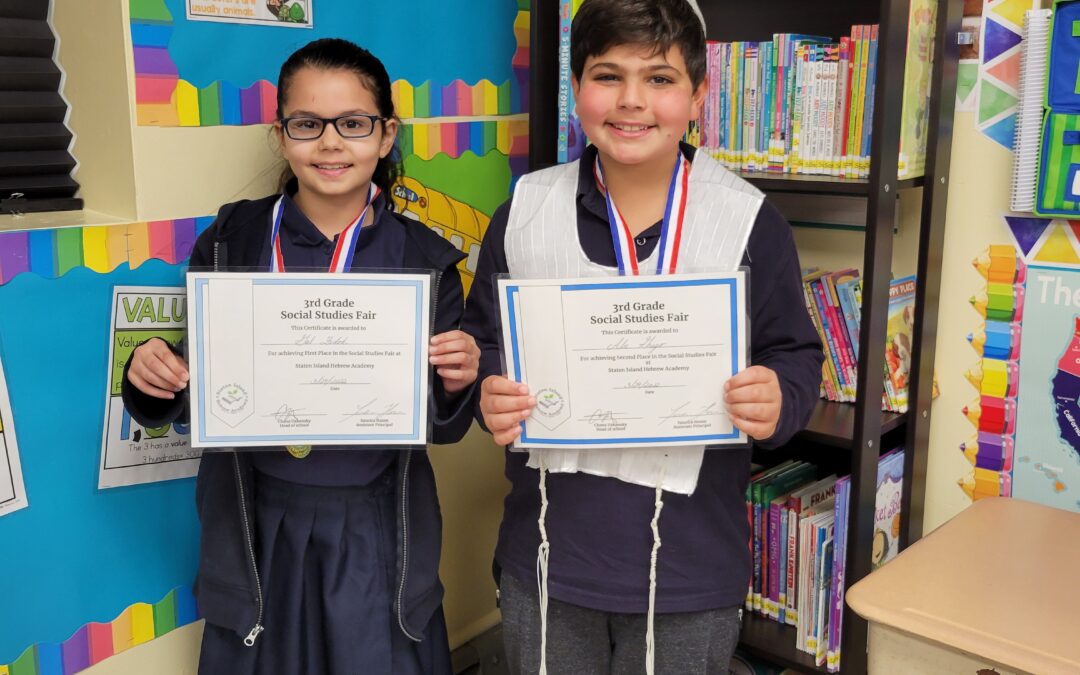
by admin | Apr 1, 2022 | Newsletter
Dvar Torah
Parshas Tazria/Parshas HaChodesh
Candlelighting: 7:03
This week is the last of 4 weeks during this time of year when an extra Torah is removed from the ark and an additional portion is read.
In addition, this week, a 3rd Torah will be taken out as it is Rosh Chodesh Nissan as well! (My kids are looking forward to 3 desserts in honor of the occasion!)
The extra portion we read this week is the portion which tells us about the Mitzvah of Rosh Chodesh. Think about the scene for a moment. The Jews had just suffered through years of slavery in Egypt. They experienced a year of miracles where Hashem punished their tormentors and clearly demonstrated to the entire world His existence and power. The Jews were told that they would be redeemed very shortly. They are all looking forward to leaving Egypt and following Hashem, through the direction of his prophet Moshe, into the desert. They are ready and eager to follow Hashem’s commandments.
As they listen eagerly, they are given the first commandment, the commandment to sanctify the first day of each month. What is so special about this commandment that it was the first one given to the entire Jewish people for all time? What is it teaching us?
This commandment conveys a crucial lesson for life. Every month is a new month, a new chance, a new opportunity. Each month we have a new moon. We start fresh. We experience renewal. The first month is the month of Nissan, even though the new year is in Tishrei. This reinforced the message of a fresh start, of renewal as it is springtime. The earth is coming to life again.
Before the Jews can leave Egypt on their journey to become the Jewish nation, it was necessary for them to learn this lesson. We need to constantly renew our observance of Judaism. We need to make sure we do not fall into the trap of observing Judaism out of habit but constantly keep it fresh, new and exciting!
Have a Gut Shabbos and A Gutten Chodesh
Mrs. Rosskamm
Special Announcement
Mazal Tov to Tyler Nieves, Asher Hecht, and Mark Michelson and their families upon them becoming Bar Mitzvas. Only continued Nachat!
A great big SIHA congratulations to our students of the month!
Kindergarten – Ava Schwartzman
First Grade – Aaron Elkaiev
Second Grade – Zachary Kipnis
Third Grade – Mira Elkaiev
Fourth Grade – Sarina Ilishayev
5A – Zachary Garber
5B – Ella Dery
Middle School Generalist – Jeffrey Shutman
Judaic Studies – Madison Graham
Judaics
Kindergarten and First Grade
We baruch Hashem had another great week in Kindergarten and first grade Judaics!
We are full swing in Pesach mode and are busy making a stunning haggada to use by our Pesach Seder! We learned about cleaning our rooms from chametz and doing “bedikat chametz” (checking the entire house for chametz) before Pesach. We also saw how matza is made very quickly by hand and began learning the first parts of the haggada! Our haggadas are really looking beautiful. We can’t wait to use them on Pesach!
In kriah, the first grade finished learning how to read all the nekudot! We are now working on adding nekudot to letters to form words. They are really quick learners! The kindergarteners learned how the letter “tzadik” looks like a tzadik (pious man) bent over to learn Torah! They also learned about the mitzvot of “Tzitzit” for boys, and “tzniut” (modesty) for girls. The boys now wear tzitzit the entire time!
In kesiva, the first graders learned the letters gimel and zayin with their friend “Zug the bug”!
Looking forward to another fantastic week!
Morah Chavi
Second Grade
We had a wonderful week as we continue learning all about the upcoming holiday of Pesach. We are working very hard on our Haggdahs and can’t wait to use them at the Passover Seder. We are learning the rules of the Shva noh and Shva noch vowels in the Hebrew Alphabet. We spend time doing worksheets on a regular basis reading words and searching for specific vowels within the word. When Morah says a word the students are able to tell Morah which nikudot (vowel) makes the sound Morah said. In this weeks Parsha we learned about the terrible sin of “Loshon Hora” speaking badly of other people. We know we have to think before we speak. Morah told us a story about red and green traffic lights and we role played examples of green words which make people feel good and red words which can hurt peoples feelings and G-d forbid make people feel sad. We are all working on saying green words to each other while we interact with each other. We also heard a story about Eli who woke up one morning with a terrible backache and was sad he couldn’t go to school. When he started to feel a little better he said the morning blessings with a lot of feeling. He especially concentrated when he said the Brocha of “Matir Asuriim” which is the blessing we say every day thanking Hashem that we have control of our limbs and we can move our arms and legs. Shabbat Shalom
Third Grade
The third grade is surely working hard on their Haggadahs. We are reviewing the customs that we do before Pesach, We are reviewing all the Mitzvot we do at the Seder. They can say it all.
We hope they will come to the Seder knowing so much and able to tell it over.
Special mention to Amit Amos for a beautiful Tefillah this week.
Shabbat Shalom to all.
Morah Ferber
Fourth Grade
Dear Parents,
What a wonderful and accomplishing week we had.
In Tefilla class we had such a nice Davening each day. Many Students wanted to be our” Chazzan”. Many Students wanted to give out the points. It was a truly amazing to hear the beautiful Davening.
In Ms. Shani’s class the students worked on Singular and Plural words in Hebrew. The students also worked on knowing if a word is Zachar or Nikeiva.
In Chumash we learnt about the fight between the four Kings against the five Kings. We had children in the class that made as if they were the four kings and five kings. We also concentrated once again on the Shoresh of a word.
We had a very interesting Rosh Chodesh assembly. We are excited for the new month of Nissan.
We started reviewing our beautiful Haggadah. We played in class the “Kadash Orchatz” tune. We are surely getting into the spirit of Pesach.
Shabbat Shalom,
Rabbi Berelowitz
5th and 6th Girls
Dear parents.
Thank G-d, we had a wonderful week!
We continued on in Chumash Perek Bet, learning about the birth of Moshe Rabbeinu (Moses) and his childhood in Egypt.
The girls did really well on the Birkat Kibbutz Galuyot Shemoneh Esrei quiz.
We began learning all about the beautiful holiday of Pesach (Passover.) Every student received their own Haggadah, which they will use at the Pesach Seder!
We began learning all about the Haggadah. Each day at school, the girls cover their desks with a garbage bag to make sure no Chametz crumbs get onto it.
We enjoyed an exciting hide&find-the-ten-pieces-of-bread game.
This Shabbat, Parshat Tazria, is super-special because it is also Rosh Chodesh Nissan. Any girl who Davens Hallel for Rosh Chodesh or who says Retzei or Yaaleh Veyavo during Birkat Hamazon (after blessing from a meal with bread) will receive a special prize!
Have a wonderful weekend!
Shabbat Shalom U’mevorach and Happy Rosh Chodesh!
Best Regards,
Mrs. Perlstein (Miss Dershowitz)
5th and 6th Boys
5th and 6th grade boys, this week focused on Hagada shel Pesach .
Boys broke up into groups to work on filling in our beautiful Hagada with the proper information. Of course, when necessary, Rebbe Kuritsky helped boys with the correct info to fill in.
We added the prayer of T’ka B’shofar this week to our Sh’mone Esre, prayer. We explained that it is asking for the announcement of the final G’ula-redemption.
We recently added that last “Haleluka”, which has the words all souls should praise Hashem . The Hebrew word for “soul” is N’shama The Hebrew word for breath is N’sheema. The Gmara explains that when reciting the above verse “Kol Haneshama T’halel Ka Haleluka” also, could mean that for every Nsheema, every breath, we should “Thalel Ka”, praise Hashem!
In Mishna, we moved on to learn about the law of using a larger plank of wood. We discussed that there is a Machloket between Rabbi Yehuda and Rabbi Meir about a plank of wood that is between 3 and 4 Tfachim-handbreadths . All agree that less than 3 is Kosher and more than 4 is Pasul.
We were privileged to view some short videos depicting the Jews as slaves in Egypt and Moshe hearing from G-d that he should go to Paro and help the Jews get redeemed from Egypt.
7th and 8th Girls
7th and 8th grade girls this week focused on Hagada shel Pesach .
Girls broke up into groups to work on filling in our beautiful Hagada with the proper information. We are hoping that each group will be able to teach the Hagada to those who need explanation.
We added the prayer of T’ka B’shofar this week to our Sh’mone Esre, prayer. We explained that it is asking for the announcement of the final G’ula-redemption.
We completed Perek Yud-10 in Sefer Yehoshua- The book of Joshua.
We also discussed the importance of the 4th Bracha of Sh’mone Esre-Ata Chonen You are the One who gives knowledge . We accentuated the great gift from Hashem of being of sound mind.
7th and 8th Boys
This week we accomplished very much.
In Biur Tefilla we learnt about the Tefilla of Yigdal. We went through a story about someone who needed 750 dollars. Someone else had that exact amount. He was very happy.
In Gemara class we learnt about that Dovid was building the Bait Hamikdash. As he was digging, the Tehom – depths rose and wanted to drown the world. He said to the people, is there anyone that knows if we are allowed to write the name of Hashem on a piece of pottery and throw it to the Tehom.
We learn from this story how important it is to have peace in the world, in your home, in the class, and everywhere else.
We learnt many Halachos about Pesach. It was much fun.
Topics from the Parsha:
The story of the peddler who was selling ‘medicine’ that would help you live a long life.
There are 4 shades of white that can be צָרַעַת on someone’s skin. Any other shade or different color isn’t צרעת . It also needs 2 white hairs or a piece of healthy skin on top of the צרעת . A כֹּהֵן needs to look at it and decide if it isצרעת or not.
If someone shows his skin to a כהן , and it has these signs, then the כּהן tells him that he has צרעת . He needs to leave all 3 camps (or outside the walls of יְרוּשָׁלַיִם in the times of the בֵּית הַמִקְדָשׁ ) and sit by himself. Anyone or anything that he touches becomes טָמֵא. He also needs to tear his clothing and to think about the עַבֵירוֹת that he did, and do תְּשׁוּבָה. If he doesתשׁובה the צרעת goes away, and after being checked by a כּהן he can go back home.
צרעת can also come on white clothing. It can be either a green spot or a red spot. The person doesn’t become טמא , but his clothing does. This is a smaller punishment than having צרעת on his body.
צרעת can also come on a house. If someone sees a green or red spot on his wall, he needs to call a כהן to come and check it. The כהן first tells him to clean out his whole house and take everything out, because if it’s צרעת then everything inside is טמא . If it looks like צרעת , the house needs to be locked up for 7 days. If it becomes larger, then they take out the stones that have צרעת on them and put in new ones and lock the house again. If the צרעת comes again, then the house needs to be destroyed.
Mazal Tov to Mark on his Bar Mitzvah. We wish you a along Happy life with much Beracha.
Have a great Shabbos,
Rabbi Berelowitz
Elementary School
Kindergarten
This week kindergarten learned how to read and spell DR words. They practiced putting pictures of stories in order and writing to explain how to do something. They wrote all about how to make a donut and how to play soccer. They read a story about a bunny wanting to eat so he went fishing but he kept catching funny objects instead of fish. In math they reviewed 2D and 3D shapes for their math test. They played many different games with shapes to practice identifying each shape. In science they made a mini book showing the 5 things living things need in order to survive. They also learned about how animals can survive in different environments by hibernating, camouflaging, or migrating. In social studies they learned about the community helpers that help keep people and animals healthy.
First Grade
The fabulous first graders learned alot this week. We examined cause and effect in fiction while reading the story “Click, Clack, Moo.” Students completed the Science unit about light, heat, and sound energy. They were surprised to learn that we can actually feel sound moving! In Math, we began simple multiplication facts. Students quickly mastered the concept of adding multiple groups. Finally, in Social Studies two students were acknowledged for their contributions to the Social Studies Fair-Aviel Raytburg and Aaron Elkaiev. Their explorer reports and presentation were quite stellar. We congratulate them.
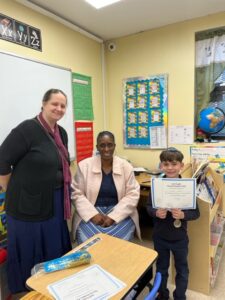
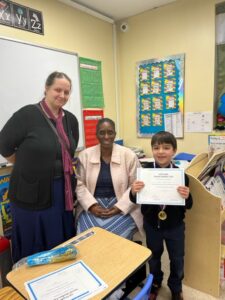
Second Grade
This week 2nd grade is working on a summary of Charlotte’s Web. We wrote first drafts, revised them, and are working on our final drafts. In math, we finished our unit mastering the 4,5, and 10 multiplication tables. In the picture, you can see Aaron Kadymir working on an equation using symbols to represent numbers! An early introduction to algebra! In social studies, we continued our unit on “people at work,” learning about producers and consumers.
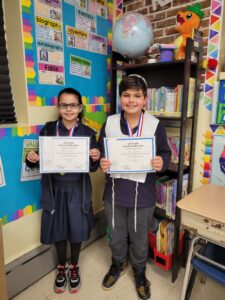
Third Grade
This week Grade three students continued to practice topics for their E.L.A. and Math portions of the S.A.T.s. Along with reviewing various math and grammar topics, students practiced writing short responses to science articles in their Ready books. During their math lessons students practiced solving word problems that involve multiplication and division of money, as well as units of measure such as miles and feet. Students created diagrams and bar graphs to organize information before applying the appropriate operations. Students also began to explore units of measure for weight and mass. Gal and Abe were awarded medals and certificates of achievement for their wonderful and thorough reports, presentations, and participation in our Social Studies fair play. They both put in a great amount of time and effort!
Miss Sasha
Fourth Grade
This week our class completed ELA state test. We are continuing to prepare for the math state test. In math we started geometry unit . Identifying angles and measuring angles.
In Social Studies we read, discussed and answered questions about resources and economy of the West.
Current class chapter book is Number the Stars by Lois Lowry which the kids are really enjoying to read.
Fifth Grade
Greetings and salutations!
This week in ELA has been quite busy. The students learned about the subject-verb agreement in grammar. They continued their vocabulary study and their root word study.
They also worked on their writing skills in their workbooks!
Above all, I am happy to say that both classes are excited and enjoying their new novels! I cannot wait for us to keep reading!
This week’s shoutout goes to our 1st and 2nd place winners in 5th grade- Brandon and Zach! Congratulations you two!
In Math, 5th grade finished their unit on conversions and started learning about volume.
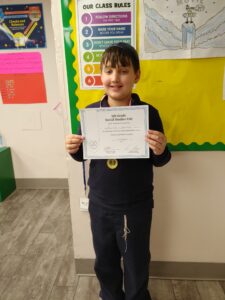
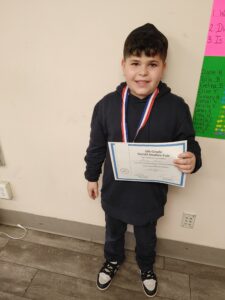
Middle School
Middle School ELA and Social Studies
6th SS and ELA
This week we dove into Athens and Sparta and what made these two ancient societies so different. We also began a small essay about Ancient Greece that reflects what we learned about these two societies.
This week’s shoutout goes to Victoria and Ruti for their wonderful discussions in class. An additional shoutout goes to Charles for placing 3rd in the Middle School Social Studies Fair! Good job Charles – the competition this year was fierce but you did it!
In ELA, 6th grade started a new novel unit: Chasing Lincoln’s Killer. We had an amazing discussion on the historic background of the novel we are reading. We also learned about text structure, specifically in reference to nonfiction texts.
7th ELA and SS
Wow! This week was a doozy. We finally made it through the dreaded State Tests! Well, at least the ELA portion. I am incredibly proud of our 7th graders for doing their best!
We also had a very nice end of novel discussion and we began our essay over the themes in Night.
Lastly, I want to extend a very big Mazel Tov to Mark for his bar mitzvah and a very big congratulations to Naomi for placing 1st in the Middle School Social Studies Fair!
In Social Studies, 7th grade continued our unit on the Constitution. We have a quiz on Tuesday!
8th grade ELA and SS
Eighth graders had a busy week! In ELA, we learned about connotative and denotative meanings of words and how word choice can affect the mood of a written texts. We looked at some poetry examples, and wrote beautiful paragraphs. In reading, we are wrapping up our novel study of Fahrenheit 451 and looking forward to our next novel.
In social studies, we wrapped up our unit on the Cold War. Next week, our students will be taking a look back and completing a project on the Holocaust.
Middle School Math
6th grade is finishing their unit on algebra.
7th grade is reviewing for the state test. Honors is learning about functions, input, and output.
8th grade is learning the Pythagorean Theorem. Honors is learning how to sketch quadratic equations and reviewing how to solve quadratic equations using different methods.
Middle School Science
6th grade
Students differentiate among weather, season, and climate; explain the need for forecasting weather in advance; explain with specific examples the various factors affecting the climate of a place or region; explain how some of these factors work together to determine regional climates
7th Grade Science
Students are investigating how our body systems work together to maintain homeostasis. They are currently taking a journey through the digestive system and discovering how nutrition and circulation play an important role in supplying our body with the nutrients it provides and how it actually gets through our bodies.
8th Grade Science
Students are preparing for the Living Environment Regent by taking practice exams and working through various aspects of this regent. In addition, students are investigating how energy flows through ecosystems, how biotic and abiotic factors affect those ecosystems and the importance of interdependence within each system.
Jewish History
7th grade watched a fascinating visual simulation of what took place during the 10 plagues, how the plagues clearly show Hashem’s power and control and how we know about it today.
We all heard what happened because there were at least 3 million witnesses who gave over the same story Seder’s each year.
8th grade learned about the writing of the Mishna, the end of the Generation of the Tanaim, and the beginning of the times of the Amoraim.
We also explored how our deeds today are worth much more because of the effort involved to act correctly in our times.
Finally, we spent some time discussing how different Jewish communities developed with different customs. Even though other communities may act differently than us, we are all Jews, united together under Hashem and His Torah.
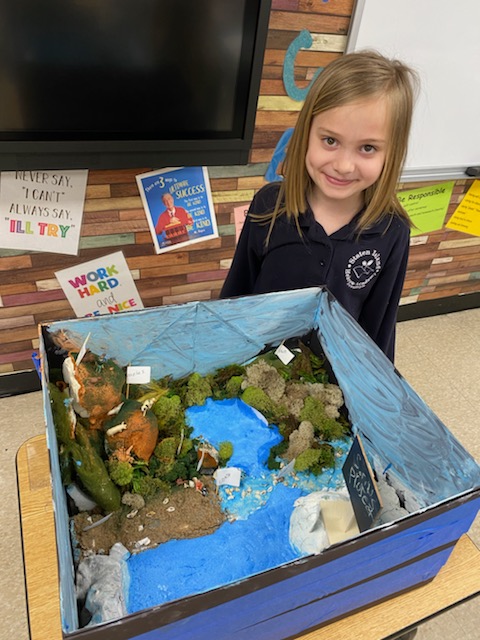
by admin | Mar 25, 2022 | Newsletter
Dvar Torah
Parshat Shmini
Candle Lightning: 6:55
Havdalah: 7:55
“The single biggest problem with communication is the illusion that it has taken place.” (George Bernard Shaw)
Communication is the foundation of community – both words come to English from the Latin word communis, meaning “shared by all or many.” This same idea is transmitted by our Sages in Pirkei Avot where we learn: “…two who sit and have words of Torah between them, the Divine Presence is between them…” (Avot 2:3). We see from here that Torah is not just comprised of our holy books but also consists of Jewish way of life and for Jewish values as a whole. We find this confirmed in other rabbinic opinions, notably in the statement derived from Mishna: “decency (derekh eretz) precedes Torah,” (i.e., Tanna D’bei Eliyahu Ch. 1). At the core of community is communication, and at the core of communication is decency.
So much of the breakdown in our public discourse and society has been chalked up to the “echo chamber” phenomenon encouraged by the ways in which we share information in this era of social media. We are literally having separate conversations! We give precedence to viewpoints to which we already adhere, and we find ways to dismiss those ideas that seem to contradict that which we already believe. And yet, the Jewish tradition encourages us to always communicate openly, to share ideas even when they contradict and, most importantly, to seek to learn from those perspectives which do not conform to our own.
In the Talmud (Eruvin 13b) we are taught that the House of Hillel merited to have the law affixed according to their perspective. Why? Because they were pleasant and patient, and they taught both their own perspective and that of the House of Shammai. Not only that, but they actually gave precedence to the perspective of the House of Shammai before their own perspective.
We have a similar lesson in this week’s Torah portion, Parashat Shmini.
Nadav and Avihu, the sons of Aharon HaCohen, brought a “strange fire” which — depending on how one translates and interprets — they were either not commanded to bring, or perhaps they were commanded not to bring. Ultimately they are consumed by fire inside the Mishkan. The Torah tells us, “The sons of Aharon, Nadav and Avihu, each man took his censer,” (10:1). Focusing on this last phrase, the Midrash provides us with this insight; that each man acted alone and they did not communicate to one another…to teach us that they entered without communication.
When seeking to establish a community grounded in values and decency, it becomes easy to view those who share a different perspective as an enemy or an adversary. Yet, the Jewish tradition comes and pushes us to see beyond this black-and-white dichotomy — to step into the gray and learn what discernible truths there may be even, or perhaps especially, in those viewpoints that contradict our own.
Peace/Shalom שלום can only be created through completion /Shlaymut שאלימוט by taking the חָלָק/partswithin an argument/machloket מחלוקת and seeing it from all sides.
Shabbat Shalom,
Dr. Chana Uzhansky
Head Of School
Special Announcement
A very special thank you to Ms. Klahr and Ms. Ortiz for their assistance with bringing the Torah to the school building for the reading of Parashat Zachor last Tuesday and to Noam Tisona for helping to prepare the Torah for the reading itself.
Sincerely,
The Judaics Department
Judaics
Second Grade
What an exciting week we experienced in 2nd grade. We loved playing Hot and Cold as Aaron K. searched the classroom with a spoon and feather looking for the 10 pieces of chometz.(Bread)which the rest of the class hid. We already learned about the Seder and are are working so hard to keep our Haggdahs neat and beautiful in honor of the upcoming holiday of Pesach. We know the holiday has four names. One of the names is “Passover” because the Jewish homes were passed over during the 10th plague when all firstborn sons were killed. Chag HaMatzos because we eat Matza as there was not enough time for the dough to rise when we left the Egyptian bondage,Ziman Chairusainu because ziman means time and Chairusainu means free. This is when the Jews finally became free. Chag ha Aviv. Aviv is spring and Passover is always in the season of spring. Shabbat Shalom
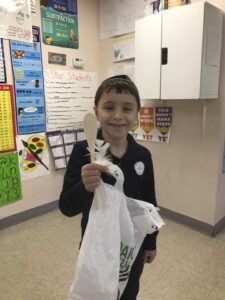
Third Grade
Hope you all enjoyed Purim with much joy and family time.
Now that we are back, third grade was so excited to start learning about Pesach. They each received their own Haggadah and we are working hard on learning the whole thing!
We also try to squeeze a little of each subject into the busy Pesach season.
We learned new words to add to our Lashon Kodesh Milim. We practiced prefixes such as “Cuf” means like, “Shin” means that, and Cuf and Shin together means when.
We also continued learning all the Parshiot in order and enjoyed singing the song.
The boys in third grade had their Tzitzit on every day this week!!
We are so proud of them!
Great job Noach Sharoni for having an extra special Davening throughout the whole week!
Keep up the great work Third grade!
Shabbat Shalom!
Morah Ferber
Fourth Grade
What a super week it was in fourth grade.
The Davening we start our day with, was beautiful. The children got many tickets, and it was great to hear the beautiful tunes from the children
In Chumash class we learnt about that Hashem told Avrum your children will get Eretz Yisroel. Hashem told Avram that your children will be so many as the dust of the earth. On our Friday Quiz the children did beautifully, and it was a pleasure to see their grades.
We are very excited to start the Haggadah next week.
Congratulations to Zohar Zadok on being this week’s winner of the week.
Shabbat Shalom,
Rabbi Berelowitz
5th and 6th Boys
This week we began studying Parashat Bo which discusses the last of the three Makot, in recognition of the upcoming holiday, Pesach-Passover.
We began with the Maka of Arab-locust/grasshoppers. We learned that Arbe ate whatever crops were not ruined/destroyed by Barad-hail mixed with fire, which was the 7th maka.
We “followed up” with beginning the study of Haggadah. We began with M’chirat Chametz-selling of the Chometz. We discussed that every Jew needs to be rid of ownership of any Chometz . We discussed that this is done, best by selling through a Rabbi.who knows exactly the correct Halachic way to go about this procedure of selling the Chometz to a non Jew.
In Parasha, we learned about Parashat Sh’mini which discusses many things. Amongst them was, the inauguration of the Mishkan and the laws of which animals are kosher and which are not. We got into a deep discussion with Oren Hecht asking “what happens if a scientist, using DNA creates a hybrid? Are all plants kosher? etc. We also discussed that until recently. many Sephardic Jews had a tradition as to which grasshoppers were kosher, and Rabbi Kuritsky shared that he knows people who actually ate them! All of them agreed that grasshoppers tasted best, fried and crunchy!
In Mishna we studied about one who paces “bundles” of kosher S’chach, but since he might have left them on the Suka to “dry out” and not for shade/the Mitzvah of Sukkah, it is Pasul!
Much more going on… Stay tuned
7th and 8th Girls
\
We began the study of Haggadah. We began with M’chirat Chametz-selling of the Chometz. We discussed that every Jew needs to be rid of ownership of any Chometz . We discussed that this is done, best by selling through a Rabbi.who knows exactly the correct Halachic way to go about this procedure of selling the Chometz to a non Jew. The girls are very happy to individualize their Hagadas with their beautiful drawings.
In Parasha, we learned about Parashat Sh’mini which discusses many things. Amongst them was, the inauguration of the Mishkan and the laws of which animals are kosher and which are not. We also discussed that until recently. many Sephardic Jews, moroccan and Yemen, for example, had a tradition as to which grasshoppers were kosher, and Rabbi Kuritsky shared that he knows people who actually ate them! All of them agreed that grasshoppers tasted best, fried and crunchy! In Tfila we are adding more Brachot of Amida aka Sh’mone Esre. We have now fully integrated up to and including the Bracha of Barech Alainu. We explained that this Bracha is literally asking for a blessing for the crops in the Land of Israel, but also used as a request for livelihood. We also added the 5th Haleluka, which we say every day.
Recapping on pre Purim … while learning Mgilat Esther, we noted that Mordechai told Esther, when asking her to [risk her life by going to] go to king Achashveirosh “Me yodaia im ka’ais kazot hegea l’malchut” Who knows if it was for this very reason that you [with God-Hashem’ help] you became quenn!?
We discussed that this is a lesson for life: If we are ever in a high/powerful/influential position, we should use it to benefit other ie outr fellow Jews, because “who knows if it was only for that reason that we reached that hight !
Shabbat Shalom
7th and 8th Boys
This week was terrific in class. The students wrote beautiful essays “Why I enjoy going to Shul”, “The Joy of Shabbat”, and more.
In Gemara class we covered a great topic. When the Kohen Gadol dies, the murderer from Galus goes free. We leant that there are 3 Kohen Gadols and Rabbi Yeudah says a fourth. The mother of the Kohen Gadol would bring food and clothing to the murderer, in order that the murderer should not Daven that the Kohen Gadol should die. We see from here the power of Tefilla. that even if a murderer Davens, Hashem listens to him.
We learnt about Chodesh Nissan and why Shabbos before Pesach is called Shabbos Hagadol.
A big Mazal Tov to Asher Hecht on his Bar Mitzvah. We all enjoyed it very much.
May Hashem give him health happiness and a wonderful life.
Congratulations to Mark Mehilson on being this week’s winner of the week.
Have a great Shabbos,
Rabbi Berelowitz
Elementary School
Kindergarten
This week kindergarten learned all about how to write a How-To. They were given the very difficult job of teaching me how to make a sandwich. I did each step exactly as they told me to causing me to make many hilarious mistakes. They realized how many details they need to give when explaining to someone how to do something. Then, they wrote about how to eat an apple. They also worked on beginning their writing by starting with a topic sentence. They read a fiction story about a dinosaur who wanted to come to school and a nonfiction story about soccer. In math they learned all about the difference between 2D and 3D shapes. They learned about cones, spheres, rectangular prisms, cubes, and cylinders. They went on scavenger hunts for shapes, made them out of play-doh, and played games with the 3D shapes. They worked on their math fluency and practiced solving addition and subtraction problems within a specific time. They are also becoming really good at solving word problems! In science they learned how to determine if something is living or nonliving and what living things need in order to live. In social studies they learned which places are in their community by creating their own community. They also learned about community helpers and all about the community workers that help keep people healthy.
Second Grade
This week 2nd grade finished reading Charlotte’s Web! We also completed our explanatory writing piece, and have moved on to comparative writing. In grammar we are learning about irregular verbs. In social studies we are learning about income, work, and how to differentiate between wants and needs. In math, we are mastering the 4, 5 and 10 times tables, while solving word problems which involve multiplying or dividing by those numbers. In the picture, you can see Sophie Braun solving the Noetic Learning problem of the week!
In science, students learned that three states of matter exist in the form of solid, liquid and gas; discussing physical properties of matter.
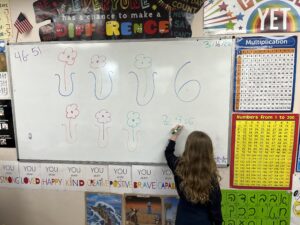
Third Grade
This week Grade 3 students continued to practice towards their S.A.T. ‘s in both E.L.A. and Math. During their math lessons, students concentrated on developing problem solving skills within multiple step money word problems. Students also began to work on organizing and analyzing data in charts and graphs. During their Grammar lessons, students reviewed different parts of speech such as verbs, nouns, and adjectives. They also worked on subject verb agreement and object/subject pronouns. During their Reading lessons, students worked in their Ready books to become more proficient in supporting their answers using relevant details from the text. They also continued to analyze the class novel and its numerous vocabulary.
Miss Sasha
In science, students learned and understood how weathering and erosion changed the earth’s surface. Amazing projects about landforms were displayed during science class from “edible landforms to building rocks, mountains, rivers, ocean, and glaciers.
Fourth Grade
In math this week we continued to work on four operations on decimals. Divided whole numbers into decimals and solved multi step word problems.
Our class continued to prepare for the state tests.
In Social Studies we read, discussed, and answered questions about the land and climate of the West.
In science, students learned and distinguish between renewable and nonrenewable resources; how can we protect our Natural Resources.
Fifth Grade
5A and 5B ELA
Greetings and salutations!
This week has been a very busy week for 5th grade. They finished their class novels with a bang and were working on writing thematic essays.
They also learned about verb tenses in grammar. Furthermore, both classes continued to hone their vocabulary skills with this week’s vocabulary words and root words.
Both classes are looking forward to their new novels and so am I! I am very happy to see how wonderfully excited the classes are about reading.
This week’s shoutout goes out to Ella Dery and Zach Garber for doing an amazing job in pacing themselves and managing their time well in regards to writing their essays.
5th Grade Social Studies
Students are beginning the journey through the American Revolution. Students will be investigating, summarizing and identifying various events and facts through this magnificent time in our history. Students are creating an interactive notebook and will be completing an American Revolution Timeline.
In science, students define natural resources; distinguish between renewable and nonrenewable resources ; compare three types of fossils; describe the formation of coal; explain where petroleum and natural gas are found; learn and explain why conserving natural resources is necessary.
Middle School
Middle School ELA and Social Studies
6th SS and ELA
Greetings and salutations!
This week in Social Studies was all about rounding off the rise of the Greek civilization and jumping into Ancient Greece proper. The 6th graders are currently dipping their toes into Sparta’s fierce society. I am looking forward to our class discussions in regards to ancient Sparta.
In ELA, we are wrapping up our novel study of Watsons go to Birmingham, 1963. We also learned verbals, and spent the week identifying gerunds, participles, and infinitives. Students also voted for their next novel and chose Chasing Lincoln’s Killer!
7th ELA and SS
This week was all about state test prep! We also finished the rather heavy but important novel, Night by Elie Wiesel. I am looking forward to the amazing writing the 7th graders will compose in regards to this powerful novel.
But first- the state test is upon us!
Lastly, a very big mazel tov to Asher for his bar mitzvah!
In Social Studies, students took a quiz on the Articles of Confederation and started learning about how our Constitution was created.
Middle School Science
6th grade
Students differentiate among weather, season, and climate; explain the need for forecasting weather in advance; explain with specific examples the various factors affecting the climate of a place or region; explain how some of these factors work together to determine regional climates
7th Grade Science
Students are investigating how our body systems work together to maintain homeostasis. They are currently taking a journey through the digestive system and discovering how nutrition and circulation play an important role in supplying our body with the nutrients it provides and how it actually gets through our bodies.
8th Grade Science
Students are preparing for the Living Environment Regent by taking practice exams and working through various aspects of this regent. In addition, students are investigating how energy flows through ecosystems, how biotic and abiotic factors affect those ecosystems and the importance of interdependence within each system.
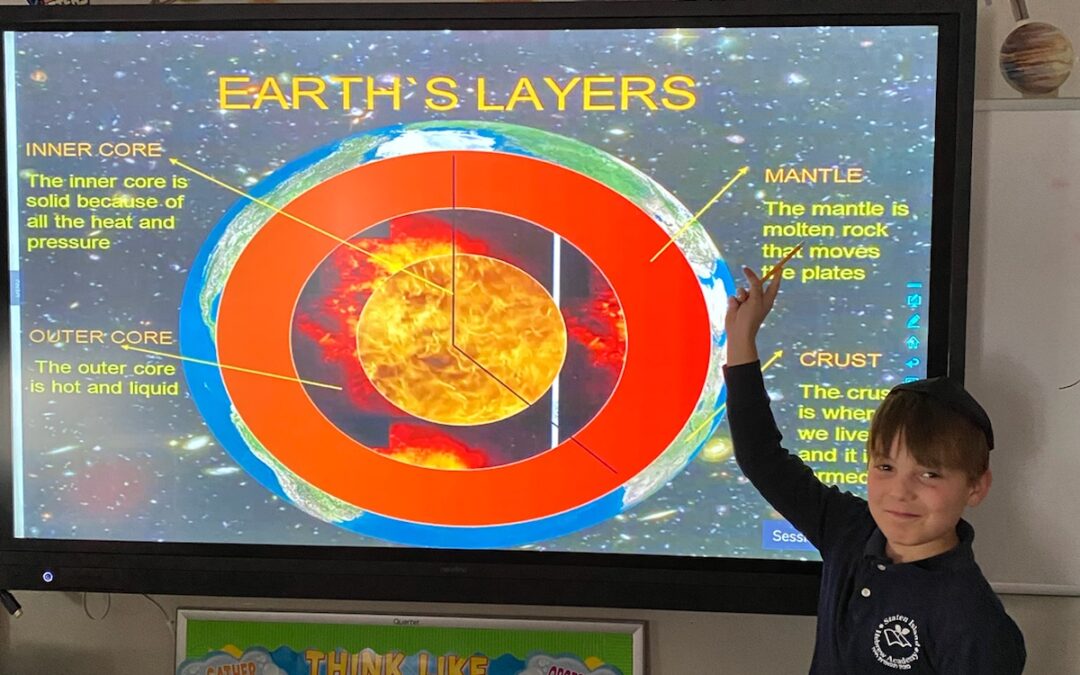
by admin | Mar 11, 2022 | Newsletter
Dvar Torah
Parshas Vayikra/Parshas Zachor
Candlelighting: 5:41
This week, once again, a second Sefer Torah is removed from the Ark and an additional portion is read. This portion speaks about the obligation to eradicate the memory of Amalek from this earth.
What did Amalek do that was so terrible? Why are we obligated to erase every trace of their memory?
The Torah tells us clearly what the nation of Amalek did. The Torah tells us “Asher Korcha BaDerech.” The nation of Amalek happened upon the Jews after they left Egypt. Amalek was a nation that believed in happenstance.
When the Jews left Egypt, the entire world was terrified of them. No nation dared attack them. Everyone heard about the 10 plagues that Hashem sent upon the Egyptians and how Hashem punished them by drowning in the Red Sea. The entire world realized that this was the work of Hashem.
Amalek alone pushed all the logical evidence and miraculous proofs to the wayside. They chose to ignore that it was from Hashem. They chose to believe that all the miracles Hashem did for the Jewish people were simple happenstance, the work of nature and not coming from Hashem.
Therefore, they were the only nation that dared attack the Jewish people after they left Egypt.
A nation that can deny Hashgocho Pratis, that dares to think that Hashem does not control the world, such a nation cannot live on this earth.
Even their memory needs to be eradicated. Purim is the time of overcoming the attitude of Amalek, of happenstance and recognizing that Hashem controls everything that happens.
Purim reminds us that Hashem controls every aspect of our lives, even when we cannot see Him. Hashem’s presence is hidden in our exile, yet Hashem is still there, loving us, protecting us now and in the future.
Have a Gut Shabbos and a Happy Purim
Mrs. Rosskamm
Judaic Studies Coordinator
Special Announcement
Dear parents,
We are all getting ready for Purim and working hard making beautiful Migilot. Our trip day is drawing closer and we truly can’t wait. Looking forward to seeing everyone dressed up and enjoying themselves.
We have another exciting announcement!
4 Mishloach manot raffles!
If you’d like to buy raffle tickets, please bring in money for Monday or Tuesday morning. The winners will be announced on Wednesday.
Special announcement for our 4th grade!
They were the first to complete their class chain of including each other!
We are so proud of you!

Judaics
Kindergarten and First Grade
We baruch Hashem had another great week in kindergarten and first grade Judaics!
In kriah, the first grade finished learning the nekuda kubutz and began to learn the very last nekuda, shuruk! Soon they’ll know how to read any Hebrew word!
The kindergarteners learned the letter “pay” and were pleased to realize that the upcoming holiday of Purim begins with the letter pay!
The children are really gearing up for Purim! We were very busy learning and reviewing the Purim story. We are so excited to bring home our very own megillas to read on Purim and act out the story with our puppets! We know the story really well!
On Friday, we continued learning about the mitzvah of Challah for Shabbat and made a special card for our mothers with the blessing we make when we separate the challah dough. We also learned about the special Shabbat this week – Parshat Zachor- where we remember how the nation Amalek tried to kill us after we left Egypt.
Looking forward to another great week!
Second Grade
What an exciting week we had in 2nd grade. On Wednesday we had a ball acting out the Purim Story in class and learning Purim songs.. A special thank you to the entire cast of actors and actresses. Thursday we made hamentashen, hope the children enjoyed the fruits of their labor. Our Hebrew word bank keeps growing as we are learning so many new Hebrew words and are familiar with many prefixes as well. We know this Shabbat we begin reading the third book of the Five books of the Torah. Sefer V’yeikra. This weeks Torah reading is the first Parsha in Sefer V’yeikra Parshat V’yeikra which discusses various offerings which were brought during the time in history when the Jews used the Mishkan and the Beit Hamikdash-the Holy Temple. Today we do not bring offerings, we pray to Hashem (G-d) through our daily formal prayers as well as being able to talk to Hashem anytime of the day or night in any language. Shabbat Shalom!
Third Grade
Third grade is almost ready for purim!
our Megillot are coming out beautifully. We are learning phrases from the Megillah and answering questions.
The students are even writing a short summary for each chapter.
They can’t wait to show you!
This week Ella Hanuka was chosen to take home the third grade siddur. Keep on davening beautifully to Hashem!
This week Shabat we read an extra Parsha. Third grade learned that it will always fall out the Shabat before Purim.
We told the story about which nation Haman comes from and why we need to remember them.
We can’t wait for next week!
Happy Purim prep, and
Shabbat Shalom!
Morah Ferber
Fourth Grade
Dear Parents,
It is very accomplishing to reflect on what we did this week.
We continued our lessons of being careful how we speak. We asked the students for examples how to express your feelings well when you are not happy. The Torah teaches us how important it is to speak positive and look at the good.
In Chumash we started moving at a quicker pace. We learned that the shepherds of Avrum got into a fight with the Shepherds of Lot. Avram then told Lot we need to separate ways. It was a great lifelong lesson how careful we need to be about other people’s money.
We spoke about the Purim Story. It was tons of fun learning about the story. We are sooo excited and counting the days.
Shabbat Shalom,
Rabbi Berelowitz
5th and 6th Boys
This week was an academically loaded week.
We reviewed, solidified and were quizzed on the 4th Mishna in Masechet Sukkah, which discusses the rules of kosher s’chach, and gives a few interesting cases of kosher s’chach. Some of the examples of kosher s’chach were;grape vines,gourd vines and soft branches. The rules are pretty simple. The materials must have two criteria: 1 It must grow from the ground and 2 it must not be susceptible to impurity [Tumah].
In Parasha, we covered, in outline fashion, Parashat Vayikra, which discusses the korbanot-sacrifices that were brought in the Mishkan and in the Beit Hamikdosh.
We completed our study of Hilchos Purim, and we will be quizzed on them this coming week, in preparation for the holiday of Purim. We now know that the Mitzvah of Mishloach manot requires us to give two food types to one person, and that Matanot la’evyonim, requires us to give tzedakah to two poor people.
We have been reading the Megillah-Mgilat Esther, in English, so we can be familiar with the story and the text. We also have been privileged to watch some Purim videos, which are informative and entertaining.
In our daily T’filah, we have added more Brachot to Amidah-Shemoneh Esrei.
We look forward to another exciting week, next week!
Shabbat shalom.
7th and 8th Girls
This week was an academically loaded week.
In Parasha, we covered, in outline fashion, Parashat Vayikra, which discusses the korbanot-sacrifices that were brought in the Mishkan and in the Beit Hamikdosh. We discussed the concept of a Karban-sacrifice and tried to understand it. We also discussed the three types of Caret.
In Navi Yehoshu, we discussed and filled in our workbook about the different kings and provinces captured by Yehoshua on his odessy conqering eretz Yisroel.
We completed our study of Hilchos Purim, and we will be quizzed on them this coming week, in preparation for the holiday of Purim. We now know that the Mitzvah of Mishloach manot requires us to give two food types to one person, and that Matanot la’evyonim, requires us to give tzedakah to two poor people.
We have been reading the Megillah-Mgilat Esther, in English, so we can be familiar with the story and the text. We also have been privileged to watch some Purim videos, which are informative and entertaining.
The girls have been preparing a skit about the Purim story…Let’s see how it works out. Stay tuned.
In our daily T’filah, we have added more Brachot to Amidah-Shemoneh Esrei; Slach Lanu =forgive us, R’eina b’anyenu-see in our affliction and Refaeinu=heal us.
We also incorporated a “haleluka”
7th and 8th Boys
This week was amazing in class.
We started lessons talking about the Beginning of Davening. The Students wrote terrific writings We spoke about Modeh Ani and Ma Tovu.
In Gemara class we spoke about the concept the Gemara says that the way a person wants the go, that is the way he is led. The Gemara brings proofs from the Torah, Nevi’im, and Kesuvim. It was an important lesson how we need to try to do our best.
Many boys said over the Gemara and explained it vey well.
We spoke about Purim and the Brachos of the Megilla. We are super excited about the upcoming Purim.
Keep it up,
Shabbat Shalom
Rabbi Berelowitz
Elementary School
Kindergarten
This week kindergarten wrote friendly letters to their parents, teachers, and friends. They learned how to write a persuasive letter by listening to a story about a boy writing letters to his mom to ask for a pet and a story about farm animals writing letters asking for blankets. Then, they did a fabulous job writing their own persuasive letters to their parents asking for a pet and why their parents should get them that pet. They also learned how to read and spell words that
follow the FLSZ rule. In math they reviewed for their math test on adding, subtracting, and solving word problems. They also learned how to write their own addition and subtraction word problem. They did an excellent job creating their own word problems and their friends were
even able to solve their word problems! In science they reviewed facts about magnets and they learned what makes something living or nonliving. In social studies they learned about what the president does, they learned how to vote, and they had a mock election to vote for the best type of cookie. They also learned about the different types of communities and which community they live in.
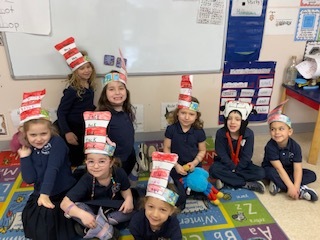
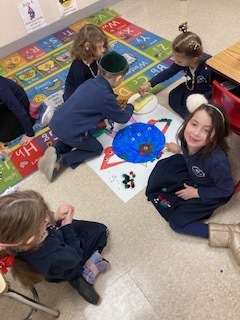
First Grade
Students have also learned about two-digit addition and place value in Math. We have concluded the Unit about matter in Science. The first graders were surprised to learn about matter in the states of solid, liquid, and gas. In Reading, we explored the concept of folktales by reading “Abuelo and the Three Bears”, a variation of Goldilocks and the Three Bears. We discovered that this folktale has been told in different t versions around the world. The first graders are learning how to summarize stories by focusing on the main idea.
Second Grade
This week in math, 2nd grade is diving back into multiplication! After completing our unit test on mental math, which the class did very well on, we are now mastering our 4,5, and 10 multiplication tables. In ELA, we are editing and completing a piece of explanatory writing, and learning about helping verbs in grammar. In social studies, we completed a quiz on the three branches of government in the United States, which was our topic for the social studies fair.
In science, What a fun week for 2nd graders. Learning about the Solar System was a blast!
From Phases of the Moon created with “Oreo cookies” to “long banner of the Planets”. Students were able to identify the planets in the Earth’s solar system; determine the position of the planets from the sun.
Mr. A. Ferrera B.S.Ed
Generalist Teacher, 2nd grade
SIHA
Third Grade
This week Grade 3 students completed their board/report presentations on American patriots. They shared the accomplishments and great deeds these men and women achieved that made this country independent and stronger standing apart from the British rule. During their Grammar lessons, students worked on identifying and writing possessive nouns in both singular and plural forms. They also continued to practice concepts towards the English and Math portions of the S.A.T. During their Math lessons, students practiced converting, adding, and subtracting units of measure for length. They used inches, feet, meters, and kilometers to solve word problems and identify the perimeter of shapes. They had also practiced solving word problems that involved money.
In science, 3rd graders started a new chapter” Forces shape the land”
Students identified and compared Earth’s surface land and water features.
Miss Sasha
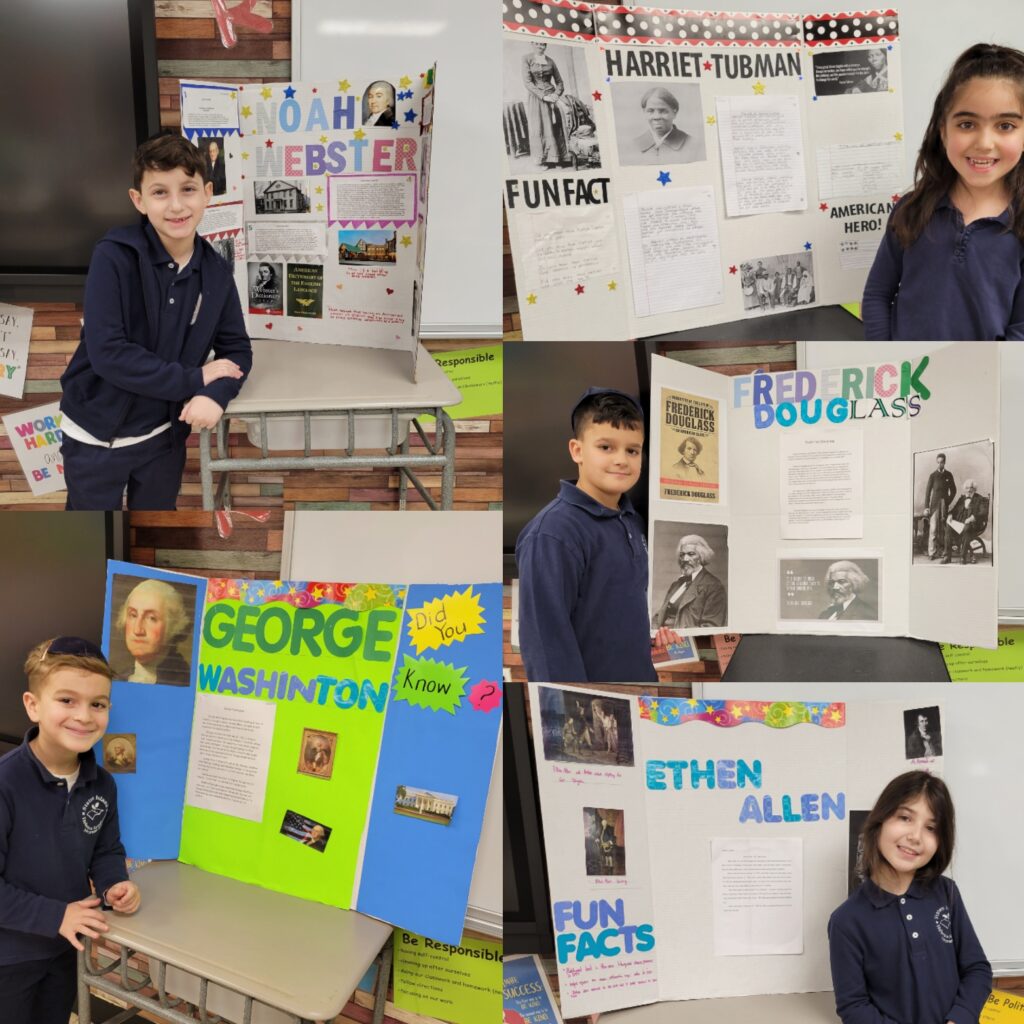
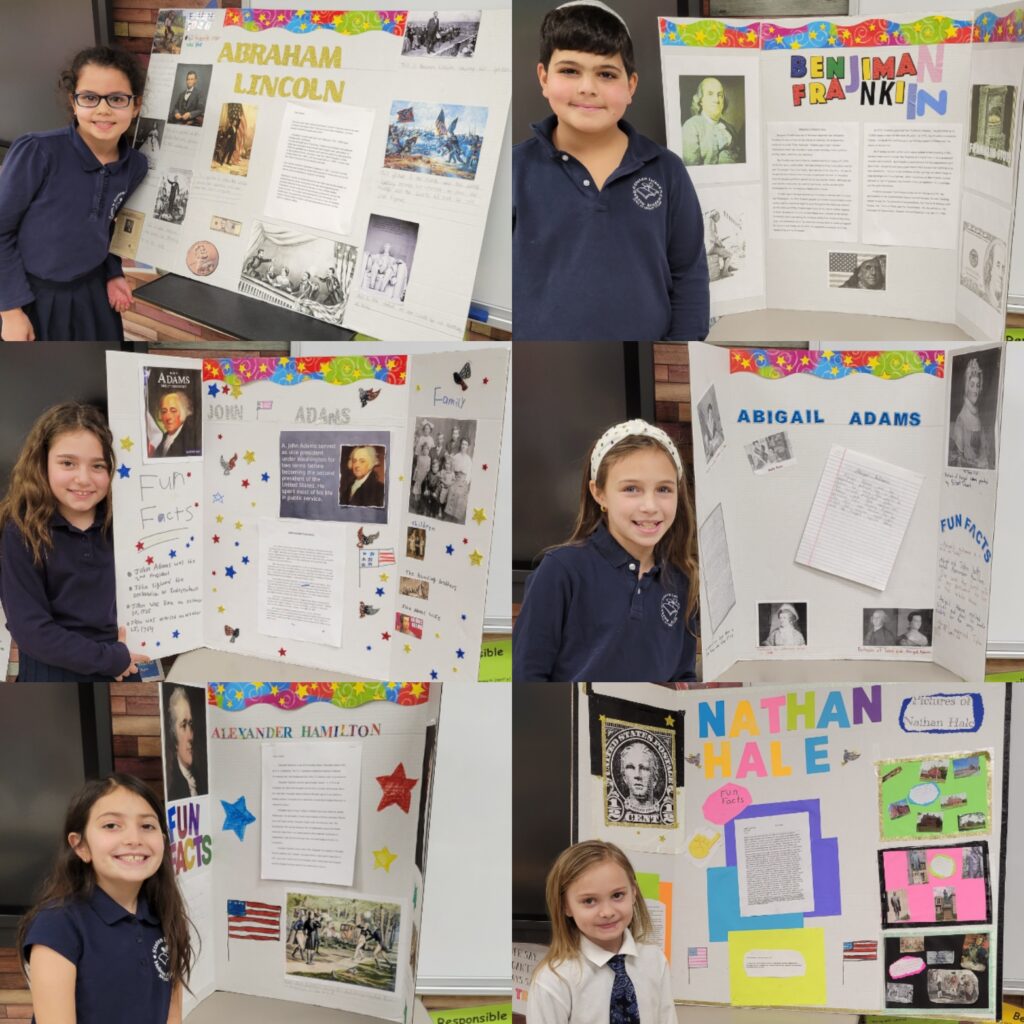
Fourth Grade
In science, students explored the science of weathering and erosion to understand how Earth’s surface changes; understood that most mountains form as a result of the movement of sections of Earth’s crust.
This week in math we were adding, subtracting, multiplying and solving words problems with with decimals.
Prepared for noetic and state tests.
In Social Studies we started a new chapter called Living in the Midwest. Read and discussed about the Great Lakes State.
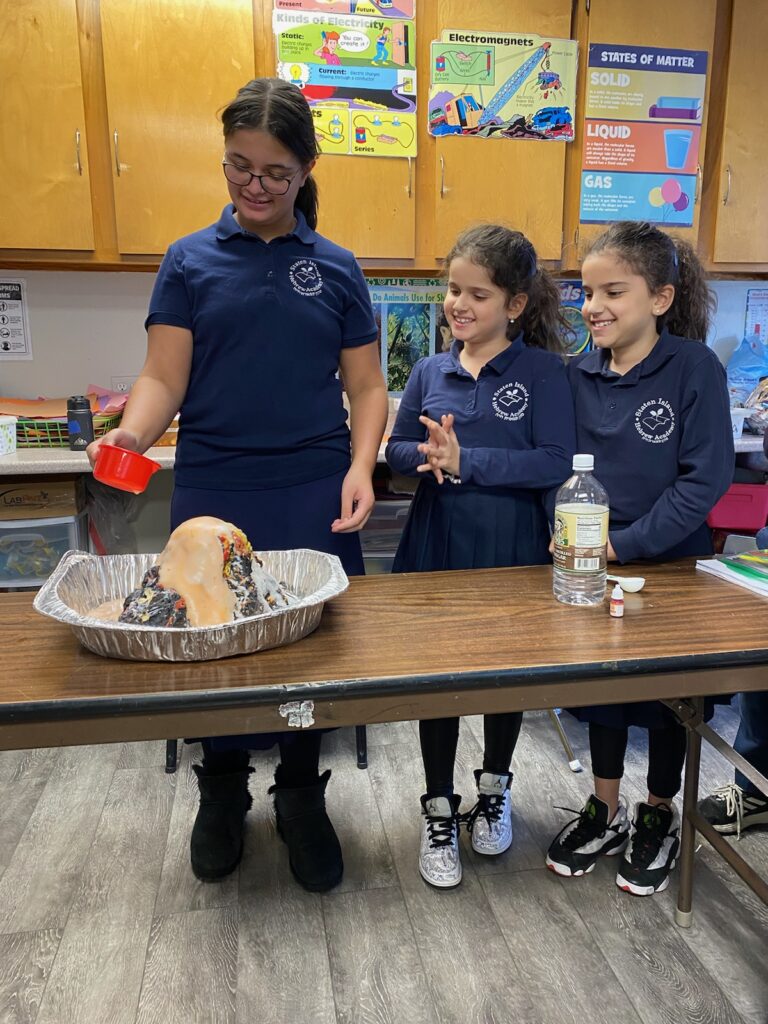
Fifth Grade
Fifth graders had a busy week! In ELA, students learned all about the direct object and the indirect object. They also learned new word roots. Students continued their novel studies and wrote some beautiful paragraphs!
In science, students defined an earthquake, as well as its epicenter and focus. Explain the relationship between earthquakes and faults. Explain the occurrence of earthquakes according to elastic rebound theory. Describe where (in a Plate Tectonic sense) different types of earthquakes are generated. Students were able to explain the theory of continental drift; describe how features of Earth’s changed over millions of years.
In math, 5th grade continued learning about decimals and started learning unit conversions.
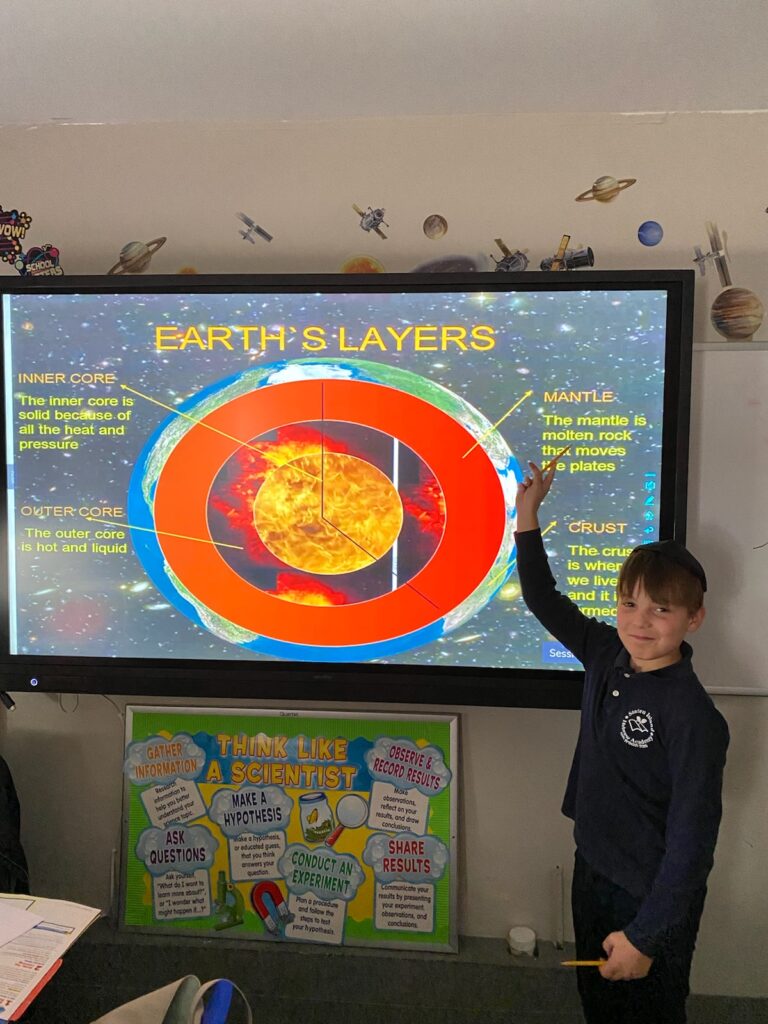
Middle School
Middle School ELA and Social Studies
6th grade
Sixth graders had a busy week!
In ELA, students continued their novel study of Watsons go to Birmingham. They also learned all about linking verbs and verb phrases in grammar. In social studies, students started their unit on Ancient Greece.
7th grade
Seventh graders had a good week!
They continued preparing for the state test and writing long responses. In grammar, students started their unit on verbs and verb phrases. They also continued their novel study of Night by Elie Weisel.
In social studies, students started their unit on the constitution.
8th grade
Eight graders had a great week!
Students continued their novel study of Fahrenheit 451. In Grammar, this week was all about preparing for our vocabulary unit test. Students worked very hard!
In social studies, students started learning about the end of the Vietnam War and wrapping up our unit on the Cold War.
Middle School Math
6th grade finished percentage and began learning algebra.
7th grade finished their module on nonproportional relationships.
8th grade finished learning how to factor.
Middle School Science
6th Grade
Students understood the important role that water plays in wind systems, weather patterns, and weather events; during an activity students were able to classify shapes and types of clouds according to elevation and their associated weather conditions and patterns. A unit Test was assigned.
7th Grade
As students learn about the nervous system and the brain, they are conducting research. Each student was assigned an organ of the nervous system and/or a part of the brain that they had to investigate. Students researched the importance of their organ and identified the role of their organ, where it is located, what it’s special function is and how it interacts with other parts of the body. Once this was established, students had to investigate using two of the five questions, or create their own question. These were some sample questions provided: How does trauma affect the cerebellum? How does poor diet choices affect the cerebellum? How do toxins affect the cerebellum? What body systems or organs are affected if the cerebellum is damaged? Students plugged their part into the question and investigated various sources to complete a summary. Students then had to state their claim and provide evidence that supports their claim. As they continue to work hard, next week I will publish some of their results. Excellent Job, 7th Grade.
8th Grade Science
8th graders just completed their Diffusion Through Membrane state lab. Students investigated which molecules were able to diffuse through the membrane. Students created a model cell and filled it with glucose and starch solutions. They placed this cell into a beaker with water and iodine and waited 20 minutes to investigate exactly what took place. Students were able to make the conclusions that the iodine diffused into the cell and created a chemical reaction with the starch solution. This was evidenced by the color inside the cell, as it turned a blue/black color. Then students had to investigate even further to determine what happened to the glucose solution, if anything. Students had to undergo a few tests to determine if the glucose did in fact diffuse out of the cell. They had to place water from the beaker into a test tube with Benedict’s solution and Iodine to determine if it did in fact diffuse, but they discovered that this was not the way to test for glucose. So, upon further investigation, they placed water from the beaker that the cell was placed in a test tube and added Benedict’s solution, then they placed their test tube into a bubbling beaker and waited five minutes to determine if glucose did in fact diffuse out of the cell. Upon completion of their investigation they determined that glucose did in fact diffuse out of the cell, as this was evidenced by the color change. Once the test tube liquid was heated in a water bath the color changed to green, then to orange which is indicative of the presence of glucose. This was the conclusion of their lab.
Jewish History
7th grade began learning about the Egyptian exile and how Hashem clearly demonstrated that He created the world, controls the world, and cares about the world.
8th grade continued learning about how the Sages prepared us for the long and bitter exile after the Second Bais HaMikdash was destroyed and the steps they took to make sure the Torah would not be forgotten.

by admin | Mar 4, 2022 | Newsletter
Dvar Torah
Shabbat candle lighting time- 5:32 PM
Havdalah – 6:33 PM
Parshat Pekudei
This dvar Torah is dedicated to all the innocent people suffering in Ukraine and around the world and inspired by my awesome and diverse teaching staff.
As we approach the holiday of Purim, we can sense in the air a feeling of camaraderie and friendship that this holiday teaches us. The acts of giving Shaloch Manot (giving gifts to people) and taking care of the poor are designed to create a feeling of Achdut (unity) among us. Yet, we find a puzzling Halacha (law) related to the observance of this holiday.
The Talmud (oral law) in tractate Megillah states that one reads the Megillah on different dates depending on one’s location. Most of us celebrate Purim on the 14th of Adar. However, individuals who live in a walled city celebrate Purim on the 15th and in some cases, the Talmud tells us at different times in history there were people who even read the Megillah on the 11th, 12th, or 13th of Adar. It makes one wonder why a holiday that represents Achdut does not have everyone celebrating the holiday at the same time.
Rabbi Zev Leff, (the Rav of Moshav Mattityahu and Rosh Yeshiva of the Yeshiva Gedolah Mattityahu) a renowned lecturer and educator, explains the true understanding of being a unified people. Achdut does not mean that everyone does the same thing at the same time. Rather, Achdut means that I am happy for you with what you are doing, and you, in turn, are happy for me with what I am doing. Achdut is respecting each other’s differences and appreciating people for whom they truly are.
We are all created in the image of G-d and have something to contribute to society. Baruch Hashem that we are fortunate to live in a wonderful unified SIHA community. Let us all strengthen our respect and admiration for our fellow friends, colleagues, and neighbors. Today more than ever humanity must transmit this message to our children.
I would also like to publicly thank a colleague of mine, from our general studies department, who is not of the Jewish faith, for sharing a great article/dvar Torah with me this morning. Very inspiring and definitely worth a read.
https://www.jpost.com/opinion/seeing-hidden-miracles-and-joy-during-the-month-of-adar-619037
This very gestures just underscores one of the reasons that I am grateful for SIHA!
May our unity, love, and respect grant us the merit to witness the ultimate redemption and the rebuilding of the final Beit Hamikdash speedily in our days.
Shabbat Shalom,
—
Chana Uzhansky Ed.D.
Head Of School
Special Announcement
Dear parents.
Happy Rosh Chodesh Adar!
We had a really fun time at our Rosh Chodesh Adar assembly! The 3rd graders put on a fantastic Purim story presentation.
All the students really enjoyed the happy purim clown oodles.
We’re very proud of all the students who are including others and adding paper clips to their class’s chain.
Keep it up!
We can’t wait to see which class will win the ice cream party!
Shabbat shalom!
Best Regards,
Miss Dershowitz
Mrs Ferber

Every day in Siha, middle school, the children expend positive enthusiasm towards Birkat Hamazon. Usually we, Mrs Belli, Miss Ety, and rabbi Kuritsky give out raffle tickets 🎟 to help motivate the children to bentch out loud nicely.
Today, Thursday the first day of Rosh Chodesh Adar #2, the children really gave it their all.
The 7th grade, the oldest class that joins our lunch program, really deserves to be commended!
Every 7th grade student, was saying the words louder clear. They were a true role model for the younger students in middle school
Judaics
Kindergarten and First Grade
We baruch Hashem had a wonderful week in kindergarten and first grade Judaics!
In kriah, the first graders are learning the nekuda kubbutz and are really mastering it! The kindergarteners learned the letter ayin and had a great time playing “I spy with my little ayin” and learning about the midda (character trait) of anavah (humility).
In kesiva, the first graders learned the letter daled and tzaddik and completed their third kesiva booklets!
We continued learning about the upcoming holiday of Purim. Our megillas are looking gorgeous and we are doing a great job filling in the blanks (in Hebrew!) inside.
On Friday, we continued learning about the mitzvah of challah and made beautiful challah covers to use on Shabbat.
Looking forward to another great week!
Second Grade
Time is flying by quickly in 2nd grade. We are mastering our Kriya and vocabulary skills. We know so many Hebrew words. We reviewed the entire Sefer Shimot(Book of Exodus). This Shabbat we are privileged to listen to the last Parsha in Sefer Shimot. For those of us who are privileged to be at the synagogue Shabbat morning we will join with everyone in saying together Chazak,Chazak V’neschazaik which is customarily said after concluding an entire Book of the Torah. We read and discussed highlights of each Parsha in the Book of Exodus. Shimot-Exodus is the second of the 5 Books of the Torah. We are in the Purim spirit and can’t believe Purim is just two weeks away, we celebrated Rosh Chodesh- the new month of Adar with Ms. Yelena and enjoyed singing popular Purim tunes yesterday. Since there are two days of Rosh Chodesh this month we celebrated with other classes at a Rosh Chodesh assembly today as well. Shabbat Shalom!
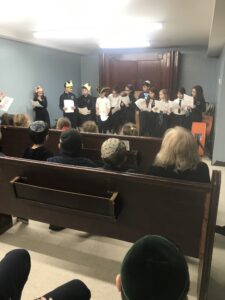
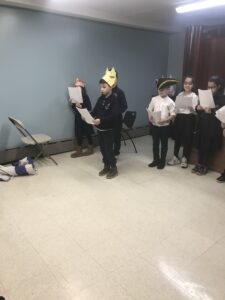
Third Grade
Welcome back! We had a great week of learning.
We started to learn about the Purim story! They are all so excited.
We also continued to learn the Parshiot. We now know the first 2 books of the Torah.
The students are really knowing their brachot. We say them beautifully each day.
We ended off by a wonderful Parsha lesson which they all participated in beautifully.
This week Lielle Garber was chosen to take home our Siddur. Great job!
Can’t wait for a fun filled week as we prepare for Purim!
Shabbat Shalom!
Morah Ferber
Fourth Grade
Dear Parents,
4th Grade
What an accomplishing week it was.
We started a brand new topic. It was about communication with others. We discussed how powerful words can be. We have to be very careful what we say and when we say it. Words can really make someone feel good or do the opposite.
In Chumash class we learnt that Avrum went back to where his tent was in the beginning. It was tons of fun answering the questions and finding the Shoresh.
Yes. Purim is around the corner. We are learning the story and getting ready and are very excited. We had a special Rosh Chodesh Assembly in Honor of Rosh Chodesh.
Alivia and Matthew are the Students of the week.
Shabbat Shalom,
Rabbi Berelowitz
5th and 6th Boys
This week we delved into Hichot Purim. We studied about the fast of Esther, and about although generally the fast of Esther is commemorated on the 13th of Adar [or in cases like this year when there are 2 months of Adar, 13th of the second Adar], there are times when we commemorate the fast on the 11th of Adar!
We learned that we are to hear the threading of the Megillah twice on Purim. Once at night [this year Wednesday evening the 16th of March] and once in the daytime of Purim. We learned about the Mitzvot of Purim;Mishloach Manot, Matanot La’evyonim, reading/hearing the Megillah and the s’uda [the festive meal].
We went through some basics of this week’s Parasha, Parashat Pekudei. We discussed Moshe having the privilege of putting up the walls/beams of the Mishkan. This was a miracle! The beams were extremely heavy. Others tried but were not able. HAshem gave Moshe this privilege in lieu of not having any part in designing the Mishkan or its artifacts. We explained why B’tzal’ail, [who was only 13 years old] received the privilege of being the main designer. When Moshe went up to heaven to receive the Torah, he did not come down as soon as expected. The people influenced by the erev rav [not very sincere converts] convinced the jews that Moshe had died and got the people to create the golden calf a form of idol worship. Chur, Miriam’s son, tried to stop them but was killed in the process. In reward for Chur’s self sacrifice HAshem promised him that his grandson B’tzalel would have this privilege of designer of the Mishkan.
In Mishna, we began a new topic; learning about what is the criteria in kosher s’chach. We also learned that even a material that is kosher has to be put on properly, or else it has to be removed/raised and then replaced.
Thank you again, students and parents for the beautiful and thoughtful gifts that you sent me as a “get well soon” gesture. Much appreciated.
Shabbat Shalom!
7th and 8th Girls
This week we delved into Hichot Purim. We studied about the fast of Esther, and about although generally the fast of Esther is commemorated on the 13th of Adar [or in cases like this year when there are 2 months of Adar, 13th of the second Adar], there are times when we commemorate the fast on the 11th of Adar!
We learned that we are to hear the threading of the Megillah twice on Purim. Once at night [this year Wednesday evening the 16th of March] and once in the daytime of Purim. We learned about the Mitzvot of Purim;Mishloach Manot, Matanot La’evyonim, reading/hearing the Megillah and the s’uda [the festive meal].
We went through some basics of this week’s Parasha, Parashat Pekudei. We discussed Moshe having the privilege of putting up the walls/beams of the Mishkan. This was a miracle! The beams were extremely heavy. Others tried but were not able. HAshem gave Moshe this privilege in lieu of not having any part in designing the Mishkan or its artifacts. We explained why B’tzal’ail, [who was only 13 years old] received the privilege of being the main designer. When Moshe went up to heaven to receive the Torah, he did not come down as soon as expected. The people influenced by the erev rav [not very sincere converts] convinced the jews that Moshe had died and got the people to create the golden calf a form of idol worship. Chur, Miriam’s son, tried to stop them but was killed in the process. In reward for Chur’s self sacrifice HAshem promised him that his grandson B’tzalel would have this privilege of designer of the Mishkan.
In t’filah, the girls are not only davening up, until and including the Bracha of Hashevainu, but quite a few are even “going ahead” on their own, daily!
In Navi Yehoshua, we are delving into the 10th Perek/chapter. The girls were challenged to read the P’sukim aon their own and find out which king was the ruler of which province, that Yehoshua was heading to conquer next. These kings and countries were very scared of the Jews, who obviously had Hashem, G-d of the world, on their side.
While I was out, I was happy to learn that the girls accomplished alot with their substitute. I also understand that not only did they daven nicely, but many davened specifically for my recovery and even wrote nice notes and drew sweet and charming pictures to cheer me up!
Thank you!
Great to be back!
Shabbat Shalom!
7th and 8th Grade
A very accomplishing week it was in our class.
In Biur Tefilla we discussed the beautiful Beracha of Baruch She’amar. We said that Hashem says and does.
In Gemara class we learnt a fascinating Gemarah that says how 2 Sages started their class a certain way. We had a great class discussion why it is important to start a certain day
In Halahcha we started learning the Halachot of Purim. We learnt about the half Shekel and who must bring it. We followed that by learning the laws of Taanis Ester.
Story on Parsha:
From פּרשׁת פּקודי, we heard how the מִשְׁכָּן was to hard to put up. First the Yidden tried to put it up themselves but they weren’t able to, the קְרָשִׁים were too heavy. Hashem then told מֹשֶה that he should put up the קרשים. משה asked Hashem, “How is it possible for a person to lift up the קרשים?” Hashem answered,” You need to try and then I will help.” Even though it was too heavy for משה, when you try your best, Hashem gives you extra strength to finish. We heard a story about Rabbi Moshe Shapiro who once sent a bachur in his yeshiva to go try to raise money for the ישיבה. The bachur tried very hard, but nothing worked out. He didn’t raise any money at all. About a week later, a very rich man came to visit the yeshiva and unexpectedly gave a lot of money to the yeshiva. R’ Moshe went over to the bachur and thanked him. The bachur asked, “Why are you thanking me? I didn’t even ask that man for money.” R’ Moshe answered,
“We need to try our best and you did; after that Hashem helps.”
Keep it up,
Shabbat Shalom
Rabbi Berelowitz
Elementary School
Kindergarten
Kindergarten had a very fun week! They celebrated the 100th day of school, Dr. Seuss Day, and they had the Social Studies Fair. For the 100th day of school they made necklaces with 100 beads, painted a gumball machine with 100 gumballs, went on a scavenger hunt to find 100 marbles in the classroom, decorated a monster by gluing on 100 pom poms for hair and 100 eyes onto the monster, they made the number 100 using 2 Oreos and a pretzel, and they counted how many different activities they could do in 100 seconds. For Dr. Suess Day they listened to many read alouds, made rhyming Cat in the Hat hats to wear, they made a Horton Hears a Who art project, decorated cupcakes to look like the Cat in the Hat, and they wrote and illustrated a rhyming book similar to the book There’s a Wocket in my Pocket. The entire class did a fantastic job for the Social Studies Fair! I am so proud of how well they did. This week kindergarten also learned how to write a friendly letter and wrote letters to their family members. They practiced spelling ALL words and they continued to work on solving subtraction word problems.
First Grade
The first graders had a busy week preparing for the Social Studies Fair. Everyone was excited to share their knowledge about explorers such as Leif Erikson, Ferdinand Magellan, and Sacagawea. They also mastered the seven continents and five oceans. I’m sure they will give a great performance.
Students have also learned about two-digit addition and place value in Math. We have concluded the Unit about matter in Science. The first graders were surprised to learn about matter in the states of solid, liquid, and gas. In Reading, we explored the concept of folktales by reading “Abuelo and the Three Bears”, a variation of Goldilocks and thw Three Bears. We discovered that this folktale has been told in different t versions around the world. The first graders are learning how to summarize stories by focusing on the main idea.
Second Grade
2nd grade had a very exciting week! This week was the social studies fair! We spent a lot of class time this week preparing for the fair. Our topic was the three branches of government in the United States. Each student memorized their individual presentation of a specific part of one of the three branches of government. We also performed a skit, and created a board together as a class. We presented to Mrs. Adams and the first grade. The children did an excellent job remembering their lines, and preparing the board!
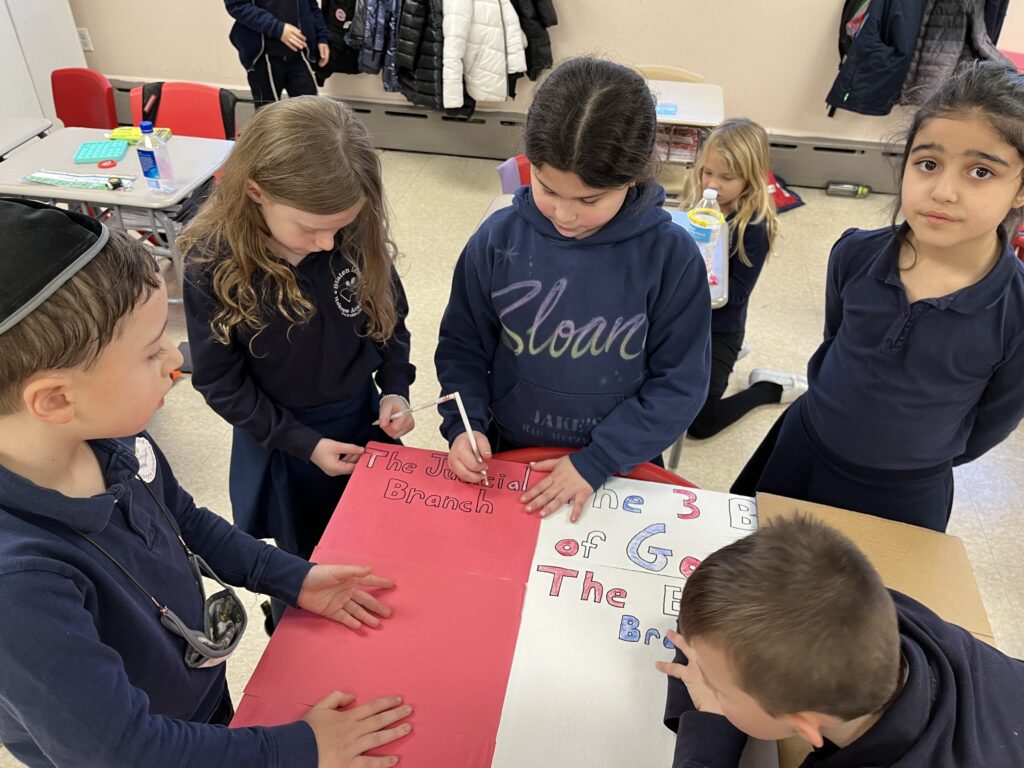
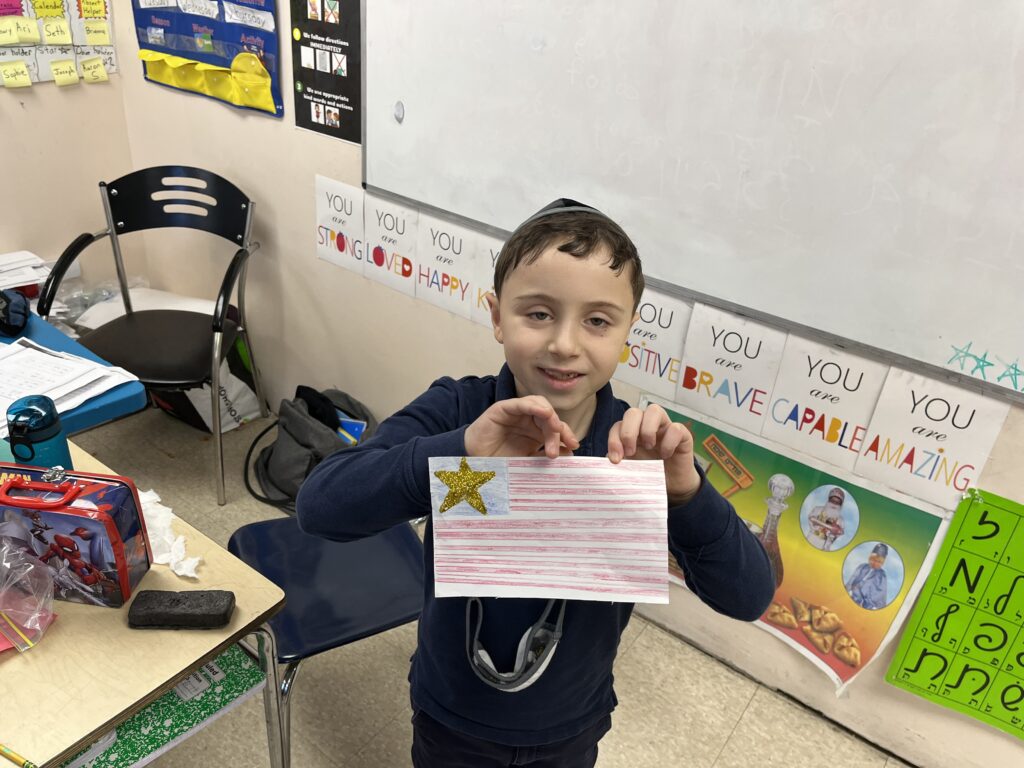
Third Grade
This week Grade 3 students were able to see the fruit of their month long labor. They completed their patriot reports, boards, presentations, and the play. They all had done a wonderful job! During our E.L.A. lessons, we continued to study towards the S.A.T. s as well as analyzing our class novel, James and the Giant Peach. During our Math lessons, we work on converting, adding, and subtracting the measuring units for length ( centimeters, meters, kilometers).
Miss Sasha
Fourth Grade
This week in ELA we are continuing to prepare for the state exam. We are reading passages, answering multiple choice questions, writing short and long responses.
In math we started a new unit The Four Operations on Decimals . Students are adding and subtracting decimals. Also preparing for that state exam.
Fifth Grade
Fifth graders had a very busy week!
In ELA, the students have been preparing for their vocabulary unit test. Everyone worked very hard and took the test on friday! Students also worked on new word roots: hydr, aqu, and mer/mar. They continued their novel studies, and in Social Studies, students prepared for their social studies fair play.
In math, 5th grade finished their unit on decimals.
Middle School
Middle School ELA and Social Studies
6th Grade
Sixth graders had a busy week!
In ELA, they continued their novel study of Watsons go to Birmingham.
In Social Studies, the students practiced for their presentations. Students worked very hard and presented their social studies fair projects on Thursday. Please look forward to the videos to come!
Middle School Math
6th grade is learning how to calculate percent change.
7th grade is learning how to calculate slope and y-intercepts from graphs and word problems.
8th grade finished their unit on polynomials.
Middle School Science
6th grade
The students were able to name each layer of the Earth’s atmosphere; described each layer of the Earth’s atmosphere. The students will be able to define the “Greenhouse Effect”. The students learned about the Ozone Layer and were able to explain the importance of the Ozone Layer.
Students considered heat transfers that occur in everyday situations and investigated three specific ways that heat moves: conduction, convection, and radiation; described and gave examples of the three methods of heat transfer.
7th Grade
As students learn about the nervous system and the brain, they are conducting research. Each student was assigned an organ of the nervous system and/or a part of the brain that they had to investigate. Students researched the importance of their organ and identified the role of their organ, where it is located, what it’s special function is and how it interacts with other parts of the body. Once this was established, students had to investigate using two of the five questions, or create their own question. These were some sample questions provided: How does trauma affect the cerebellum? How does poor diet choices affect the cerebellum? How do toxins affect the cerebellum? What body systems or organs are affected if the cerebellum is damaged? Students plugged their part into the question and investigated various sources to complete a summary. Students then had to state their claim and provide evidence that supports their claim. As they continue to work hard, next week I will publish some of their results. Excellent Job, 7th Grade.
8th Grade Science
8th graders just completed their Diffusion Through Membrane state lab. Students investigated which molecules were able to diffuse through the membrane. Students created a model cell and filled it with glucose and starch solutions. They placed this cell into a beaker with water and iodine and waited 20 minutes to investigate exactly what took place. Students were able to make the conclusions that the iodine diffused into the cell and created a chemical reaction with the starch solution. This was evidenced by the color inside the cell, as it turned a blue/black color. Then students had to investigate even further to determine what happened to the glucose solution, if anything. Students had to undergo a few tests to determine if the glucose did in fact diffuse out of the cell. They had to place water from the beaker into a test tube with Benedict’s solution and Iodine to determine if it did in fact diffuse, but they discovered that this was not the way to test for glucose. So, upon further investigation, they placed water from the beaker that the cell was placed in a test tube and added Benedict’s solution, then they placed their test tube into a bubbling beaker and waited five minutes to determine if glucose did in fact diffuse out of the cell. Upon completion of their investigation they determined that glucose did in fact diffuse out of the cell, as this was evidenced by the color change. Once the test tube liquid was heated in a water bath the color changed to green, then to orange which is indicative of the presence of glucose. This was the conclusion of their lab.
Jewish History
7th grade had a very exciting review of Unit 2, Our Nation’s Founders. The students had beautiful recall of what we learned and had a lot of fun sharing that information as we prepare for a test next week.
8th grade finished learning about the times of the second Bais HaMikdash and began watching a beautiful video about it.








